The best places to dive into Scottish history (and meet the ancestors)
Aug 12, 2022 • 8 min read

Near Sir Walter Scott's estate are the sandstone ruins of Melrose Abbey, reputedly the final resting place of the heart of Robert the Bruce © kruwt / Getty Images / iStockphoto
There’s more to Scotland ’s long and storied history than Braveheart . Indeed, Scotland’s favorite movie epic was 5% real events and 95% national pride. But finding the real history of Scotland is easy in this land of lochs and legends.
It’s worth making a distinction between places that were real-life locations for history, and places where history still feels alive. While millions of visitors make a beeline for Edinburgh Castle , a more vivid evocation of Scotland’s past can be found at dozens of less busy historical sites across the country.
From Orkney and Shetland to the rain-lashed glens of the central Highlands, here’s our pick of the best places to commune with Scottish history – and feel a little of that history seep back into the modern-day. You might even walk in the footsteps of your own Scottish ancestors.


See a snapshot of 4000 years of history at Jarlshof
Ancient villages pop up all over the Scottish Islands, but Jarlshof in Shetland is something special. Neolithic people lived here. Bronze Age people lived here. Iron Age people lived here. Pictish people lived here. Hell, even Vikings lived here. This sprawl of turf-topped Iron-Age wheelhouses, longhouse ruins and medieval walls near Sumburgh airport is like a cutaway view of more than four millennia of Scottish history.
The lonely setting, tucked onto a grassy spit beyond Shetland’s main airstrip, only adds to the magic of a site that includes ancient dwellings, a ruined broch (drystone tower), the walls of Viking longhouses and the fortified 16th-century home of Robert Stewart, the first Earl of Orkney. Flights into Sumburgh are infrequent, so there’s little apart from birdsong and sea spray to disturb the sense of swirling history.

Get closer to the Clearances in Bettyhill and the Eastern Highlands
People of Scottish descent from Arizona to New Zealand can trace the moment their families were wrenched from the bosom of Scotland to the Highland Clearances, which saw more than 70,000 highlanders and islanders forcibly relocated from their homes between 1750 and 1860. After more than a century of cultural cleansing by such villains of history as Patrick Sellar and James Loch, the Crofters’ Holdings Act of 1886 finally put an end to this shameful campaign of depopulation, but the scars of this time cast a long shadow.
Getting closer to the struggle of those affected by the Clearances means hearing the stories of those affected, and those stories are powerfully told at the Strathnaver Museum in Bettyhill. Housed in a lonely, grave-circled chapel, the museum uses historical relics and pictures created by local schoolchildren to deliver personal experiences of the Clearances.
To understand the tough lives that crofters were plucked from, you’ll need to stay in a crofter’s cottage – ideally, an unrestored one. Allt Scheicheachan in Cairngorms National Park fits the bill perfectly; there’s an open fireplace and space for a sleeping bag but not much else, and you’ll have to hike in your own firewood across the glens. Or, for the brave, there’s remote Ben Alder Cottage, set in desolate country on the shores of Loch Ericht and reputedly haunted by the ghosts of its former occupants.
Feel the shifting sands of time at Skara Brae
Of all the ancient villages uncovered in Scotland, Skara Brae probably has the most evocative discovery story. This Neolithic village was buried by sand after its inhabitants left suddenly in around 2500 BCE, leaving behind some of their most treasured belongings. The village lay hidden beneath the sands until 1850, when an Atlantic storm peeled back its lid of machair to reveal an immaculate collection of stone-walled homes, complete with indoor latrines, beds, cooking hearths and household possessions.
Within sight of the looming mass of Skaill House , Skara Brae spills out of the grass onto a windswept beach on Mainland, the largest island in the Orkney group. The voices of its vanished inhabitants seem to echo in the swish of the sea and the mournful call of gulls. You can contemplate the life of these urbane early Scots on the clifftop walk to the nearby Broch of Borwick, a time-tumbled Iron Age tower perched like a lookout above the Atlantic breakers.
Prime yourself for the trip by reading Kathleen Fidler’s The Boy with the Bronze Axe , a hypothetical story of the abandonment of Skara Brae.
Meet Sir Walter Scott in Melrose
It has to be acknowledged that many figures from Scottish history became even more heroic thanks to the creative embellishments of Sir Walter Scott, novelist, poet, playwright and historian. The great narrator of Scotland’s national story penned many of his masterworks at Abbotsford , a castle-like country estate on the banks of the River Tweed outside Melrose.
In fact, the author was almost ruined by his elaborate and lavish home. When his publishers went bust in 1825, Scott was forced to put up Abbotsford as collateral for his creditors, spending his twilight years writing his way out of debt. Nearby are the sandstone ruins of Melrose Abbey , reputedly the final resting place of the heart of Robert the Bruce.
For more Scott nostalgia, head to Smailholm Tower , a lonely tower-house on the estate where Scott was sent to convalesce from polio as a child, staying with his storytelling grandmother. You can get even closer to Scott at his mausoleum in romantically ruined Dryburgh Abbey , close to the gorgeous lookout known as Scott’s View, where the writer who forged the Scottish narrative came to gaze out over the Tweed.
Walk with Neolithic ghosts in the tombs of Orkney
You can hardly walk a hundred yards in Orkney without stumbling across another ancient tomb. But some tombs come with more mysteries than others. You’ll enter the Tomb of the Eagles at Isbister on South Ronaldsay on your back, lying prone on a wheeled trolley like an auto-mechanic tomb raider. The bones of some 340 people were found buried in this Neolithic-era chambered tomb, alongside the remains of 14 white-tailed eagles.
Back on Mainland, spectacular Maeshowe is noteworthy not only for its place in Stone Age history, but for the tomb raiders who came after. Assembled from sandstone blocks nearly 5000 years ago, this ancient burial site was raided by treasure-seeking Vikings in the 12th century in a scene worthy of Conan the Barbarian.
These interlopers left their mark in the form of rune graffiti – including a timeless boast about an X-rated liaison between Thorni and Helgi – alongside engravings of dragons and knotted serpents. Around the winter solstice, the setting sun shafts into the main chamber in spooky alignment, adding an extra sparkle of magic.
Paint a picture of the Picts in Angus
The woad-wearing Picts are the Scots everyone loves to imagine – fearless and bravehearted and steeped in Celtic mythology. These were the people who drove back the Romans and forged Scotland’s indomitable reputation. The county of Angus on the coast near Dundee is one of the best places to dip into Pictish history, with a string of ancient symbol-carved stones recalling the Picts’ conversion from paganism to Christianity.
Essential stops on the Pictish Trail include St Vigeans Museum near Arbroath, with a collection of intricately carved Celtic crosses and symbol stones, and the village of Forfar, with another fine carved stone collection at the Meffan Museum . While you’re here, stroll across the fields to view St Orland’s Stone, a Pictish cross-slab still standing in its original location, surrounded by empty countryside.
Commune with Iron Age people at Mousa Broch
Of all the ancient styles of building found in Scotland, the broch is perhaps the most impressive. These towering, pot-shaped towers were stacked up from dry stones by the Iron Age inhabitants of the highlands and islands. Some stand almost intact today, after more than two millennia of battering from the Scottish weather – a testament to the ingenuity of the people who built them.
The 2000-year-old broch at Mousa in Shetland is just a few stones away from being show-home perfect. Groups of Iron Age families once lived side-by-side in the chimney-like interior, and inside the hollow walls are winding passageways granting access to the upper levels. It’s a wonderfully atmospheric site that was mentioned in two Norse sagas. The setting – on an uninhabited island that doubles as a reserve for storm petrels and other seabirds – only adds to the fairytale.

Explore medieval conspiracies theories at Rosslyn Chapel
There’s space on the list for one stop on the coach-tour circuit. Rosslyn Chapel in Midlothian, propelled to global fame by Dan Brown’s The Da Vinci Code , features such a spectacular collection of carved masonry and occult symbology that you won’t mind sharing it with a crowd.
Erected in 1446 by Sir William St Clair, this stone chapel is embellished with everything from vines and angels to depictions of the pagan Green Man, symbols of Freemasonry and the Knights Templar, and carvings of American plants – created centuries before the discovery of America.
Rival legends claim that the vaults beneath the chapel – sealed in 1690 and never reopened – contain the Holy Grail, the head of John the Baptist, or the actual body of Christ. On the other hand, they might just contain some skeletal Scottish monks, but it’s nice to imagine… From Rosslyn Chapel, you can stroll through the woods to Rosslyn Castle, the partly ruined seat of the St Clair clan.
Explore related stories

Art and Culture
Jul 15, 2024 • 5 min read
Traditional singing and dancing are at the heart of Breton culture. Here's how to experience it.

Jan 16, 2024 • 8 min read

Jan 10, 2024 • 7 min read

Dec 28, 2023 • 9 min read

Nov 19, 2023 • 9 min read

Nov 7, 2023 • 5 min read

Jun 13, 2023 • 8 min read

Jun 3, 2023 • 4 min read

Jun 2, 2023 • 6 min read

May 26, 2023 • 5 min read
12 Must-Visit Historic Towns in Scotland
We are asked time and again for our ultimate list of the most beautiful and historic towns in Scotland. It's difficult to narrow it down when you consider that Scotland has so many towns renowned for their history, as well as plenty of lesser-known hidden gems. It's a tough choice to make, but here is a helpful list of some of the country's finest historic towns.
Dunkeld Perthshire
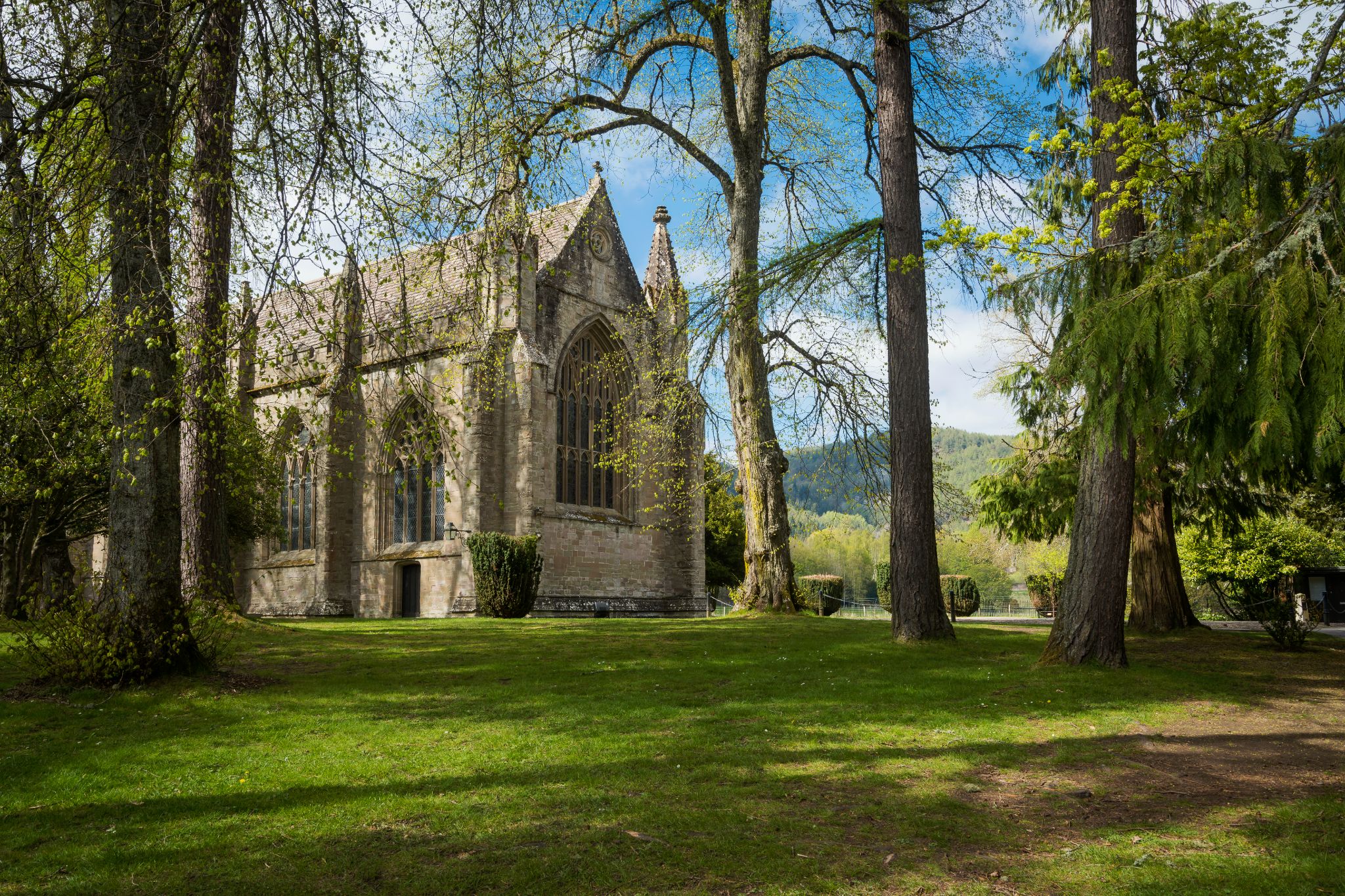
Dunkeld Cathedral
© VisitScotland / Kenny Lam
Officially classified as a town, this Perthshire gem set on the banks of the flowing River Tay retains a distinctly "village" atmosphere. Boasting a cathedral and the remnants of the ancient wood depicted in Shakespeare's Macbeth ; artists, writers and even royalty have long been drawn to the town's rich heritage, natural beauty, salmon fishing, and Shakespearian connections.
Admire the beautifully restored houses on a walk down Cathedral Street and around The Mercat Cross, then walk over Dunkeld Bridge to the Birnam Oak, or what about a local history and ghost tour ?
Arbroath Angus
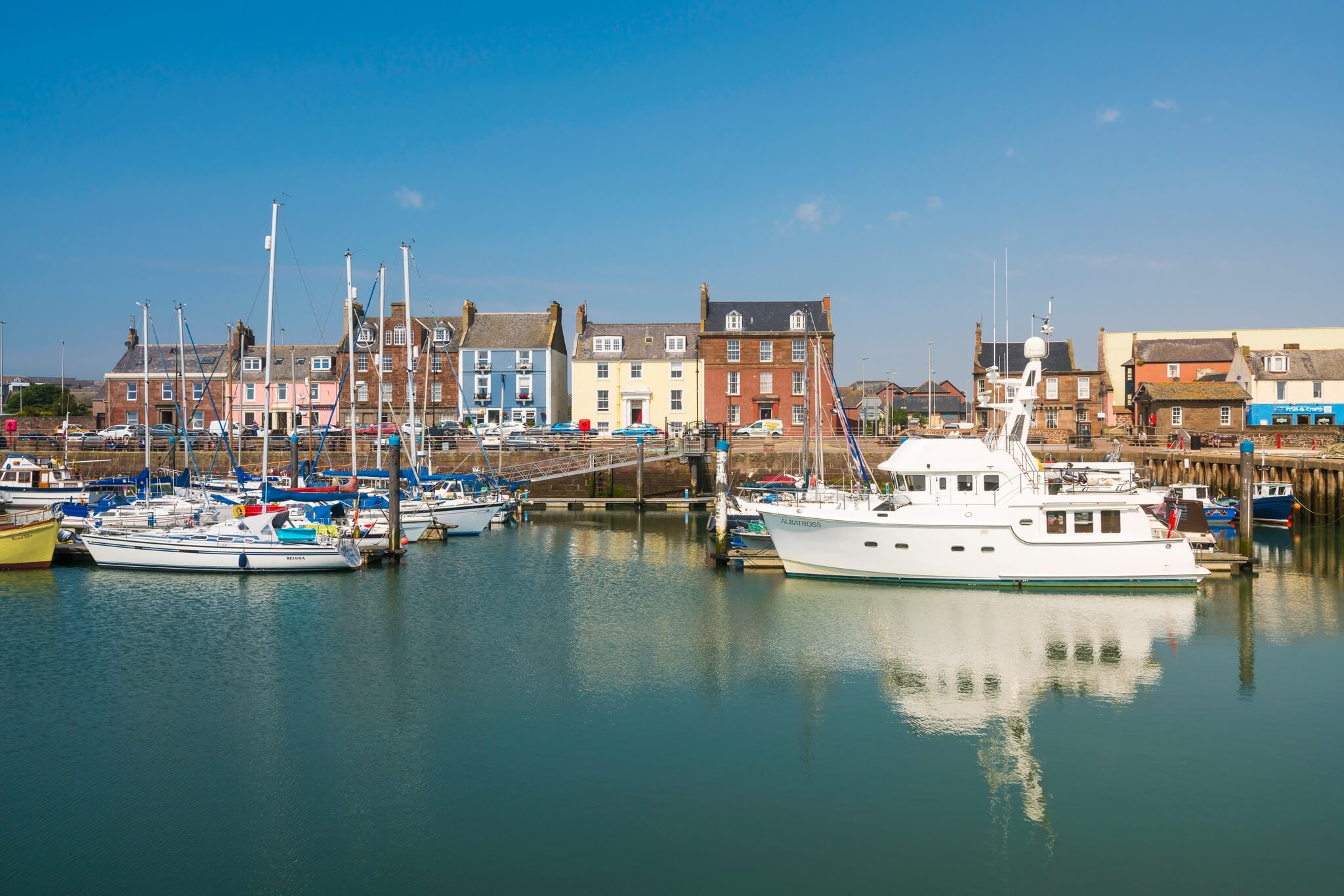
Arbroath Harbour
The Declaration of Arbroath is an important document in Scottish history which declared Scotland's status as an independent sovereign state. Its name is derived from the abbey where it was written in 1320. The red sandstone ruins of Arbroath Abbey, with its distinctive "Round O" window, is the town's main attraction, but there is plenty more to see.
Wander the pretty harbour, explore inside the Georgian Signal Tower Museum, and try an Arbroath smokie - a delicious smoked haddock and a local delicacy.
Pittenweem Fife
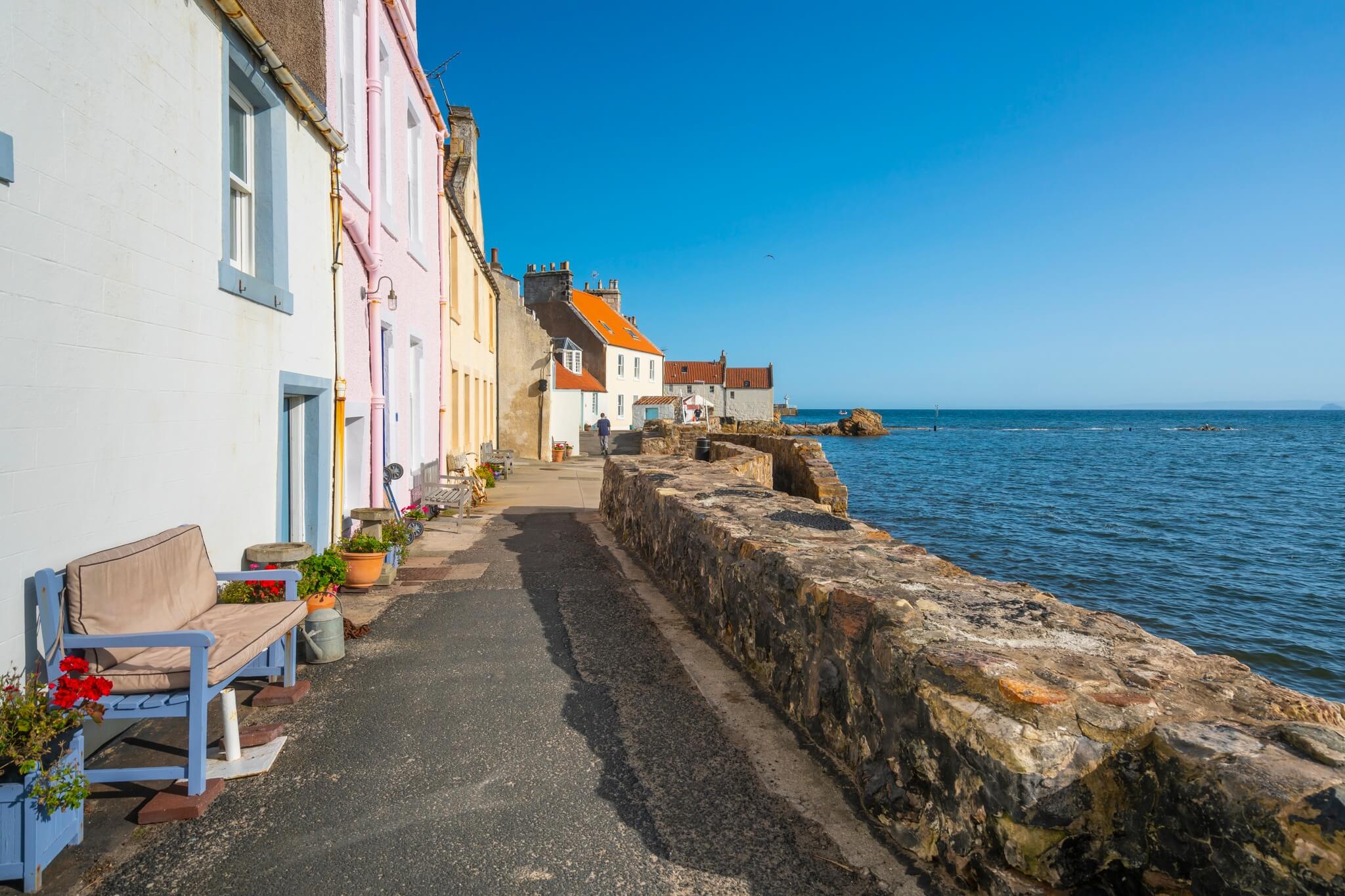
Cottages at Pittenweem
The delightful fishing town of Pittenweem must be one of the most unspoiled spots in Scotland. Located on the east coast in the East Neuk of Fife, its name is said to be derived from the ancient language of the Picts and means "Place of the Caves". Over the centuries it became an important trading port for ships carrying cargo from the Low Countries, and in 1541 James V granted the town the status of royal burgh in recognition of this.
Admire the pretty buildings where you can still find traces of European influence, with plenty of red and white architectural details and charming crow-stepped gables reminiscent of Holland and Belgium.
Fort Augustus Highlands
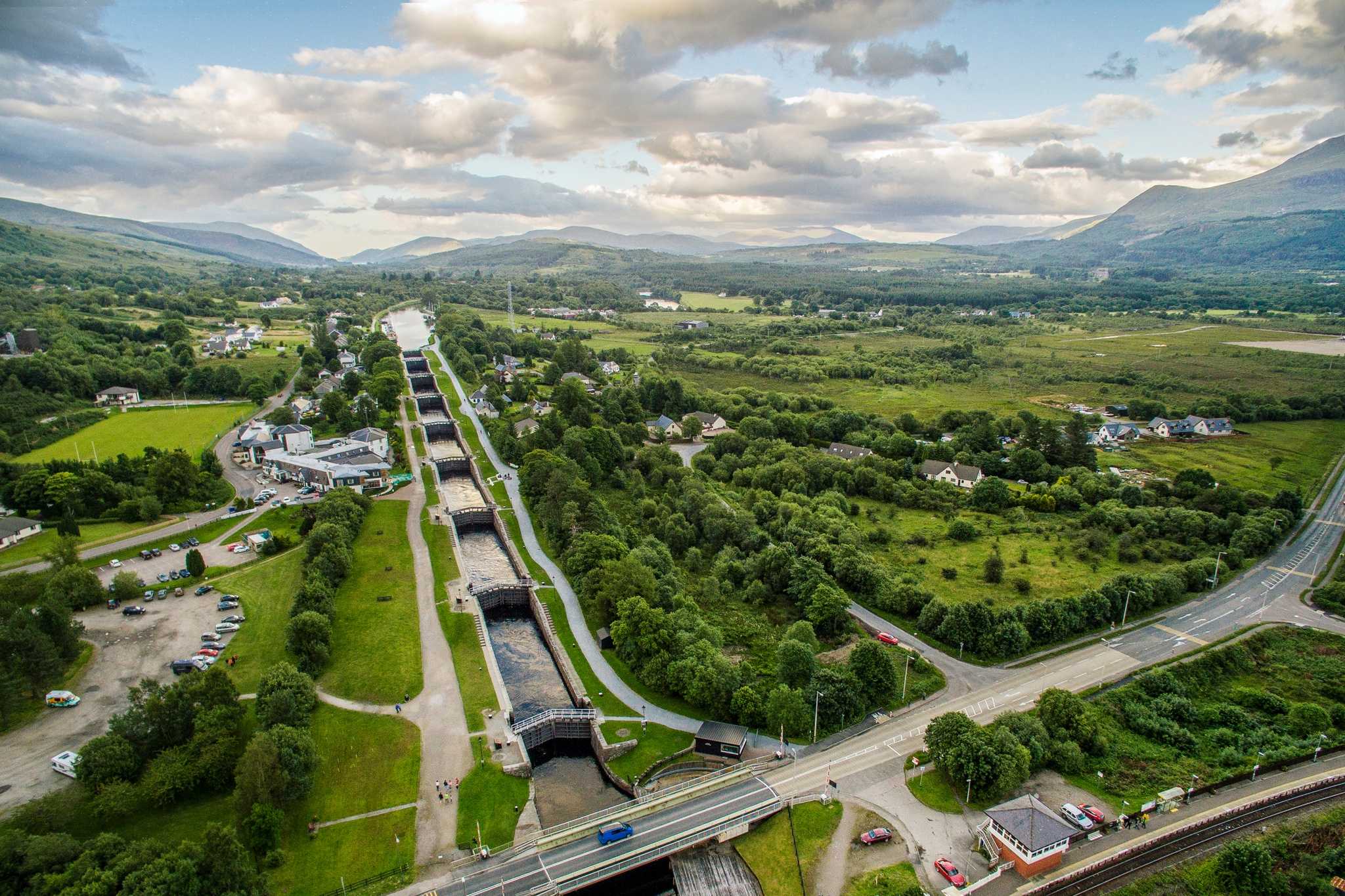
The Caledonian Canal
© VisitScotland / Airborne Lens
Fort Augustus has both history and scenery making it a popular stop for visitors to the Loch Ness area. A trip to nearby Urquhart Castle is a must, and walkers and cyclists should check out the Great Glen Way which runs through the town. History enthusiasts will enjoy a trip to the Caledonian Canal Centre in the town, where you can find out more about this ambitious 19th century engineering project.
The canal was built to provide safe passage for ships, avoiding the more dangerous route around the north of Scotland. Its construction also provided vital employment after the Highland Clearances. Travel to Fort Augustus to find out more about this lesser-known slice of Scottish history.
Wigtown Dumfries & Galloway
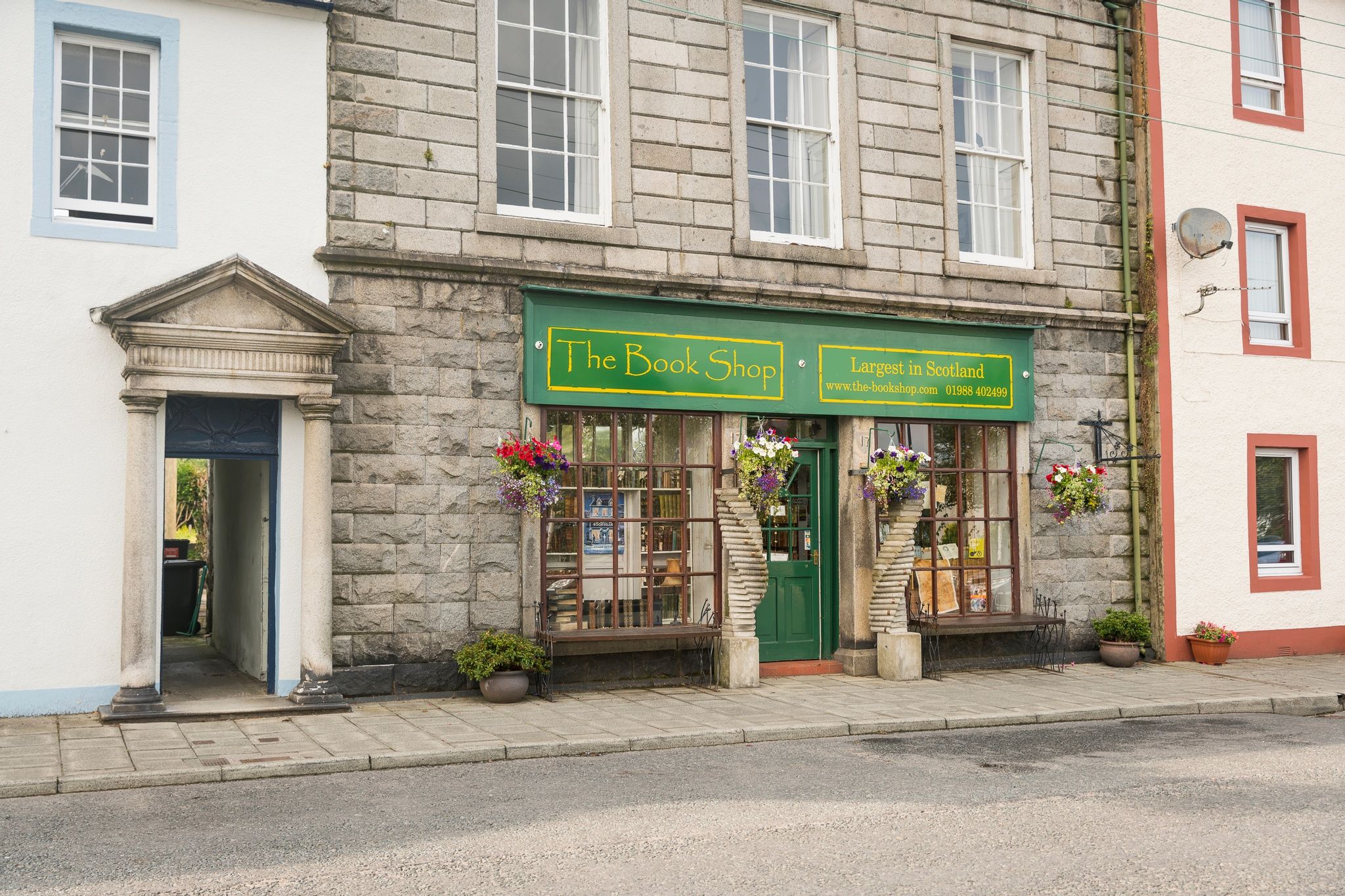
The Bookshop in Wigtown
Wigtown is Scotland’s National Book Town and has a variety of independent bookshops and an annual book festival. The Wigtown Book Festival is one of the UK’s best-loved literary events with a ten-day festival in addition to a year-round programme of events in the area.
Near Wigtown is the Martyrs' Stake which marks the spot where two women covenanters were sadly drowned in May 1685. A marked walk through the town will take you there via the County Buildings, which used to be the local courtroom and now houses the town library and the remains of an 18th century prison cell. The walk has views over Wigtown Bay and the Galloway Hills.
Inveraray Argyll and Bute

Inveraray Castle
© VisitScotland / Stuart Brunton
Set on the shores of Loch Fyne, Inveraray is what is known as a "planned" town which was designed and built by the Duke of Argyll in the 18th century. Consequently, Inveraray possesses a grandeur that makes it unique among Scotland's small historic towns. The town's Front Street and harbourside are remarkably pretty while the Georgian Inveraray Jail is now an intriguing museum.
Other notable landmarks include All Saints Church, the 38 metre-high Duke's Tower which you can climb to the top of, and the Inveraray Cross at the harbourside, an ornately carved stone pillar dating from the 12th or 13th century.
Dunvegan Skye
Dunvegan Castle
The small town of Dunvegan on the west coast of the Isle of Skye is best known for Dunvegan Castle. The castle sprawls on top of a rocky outcrop, sandwiched between the sea and several acres of beautifully maintained gardens. It has been the seat of the Clan MacLeod since the 13th century, but the present fortress dates from the 1840s.
Generations of MacLeods have lived here over the last 800 years, and the castle has endured centuries of building, demolition and rebuilding which gives it a rich architectural history. This place is well worth a visit if you are travelling to Skye, especially if you have ancestral connections to the area.
Falkland Fife
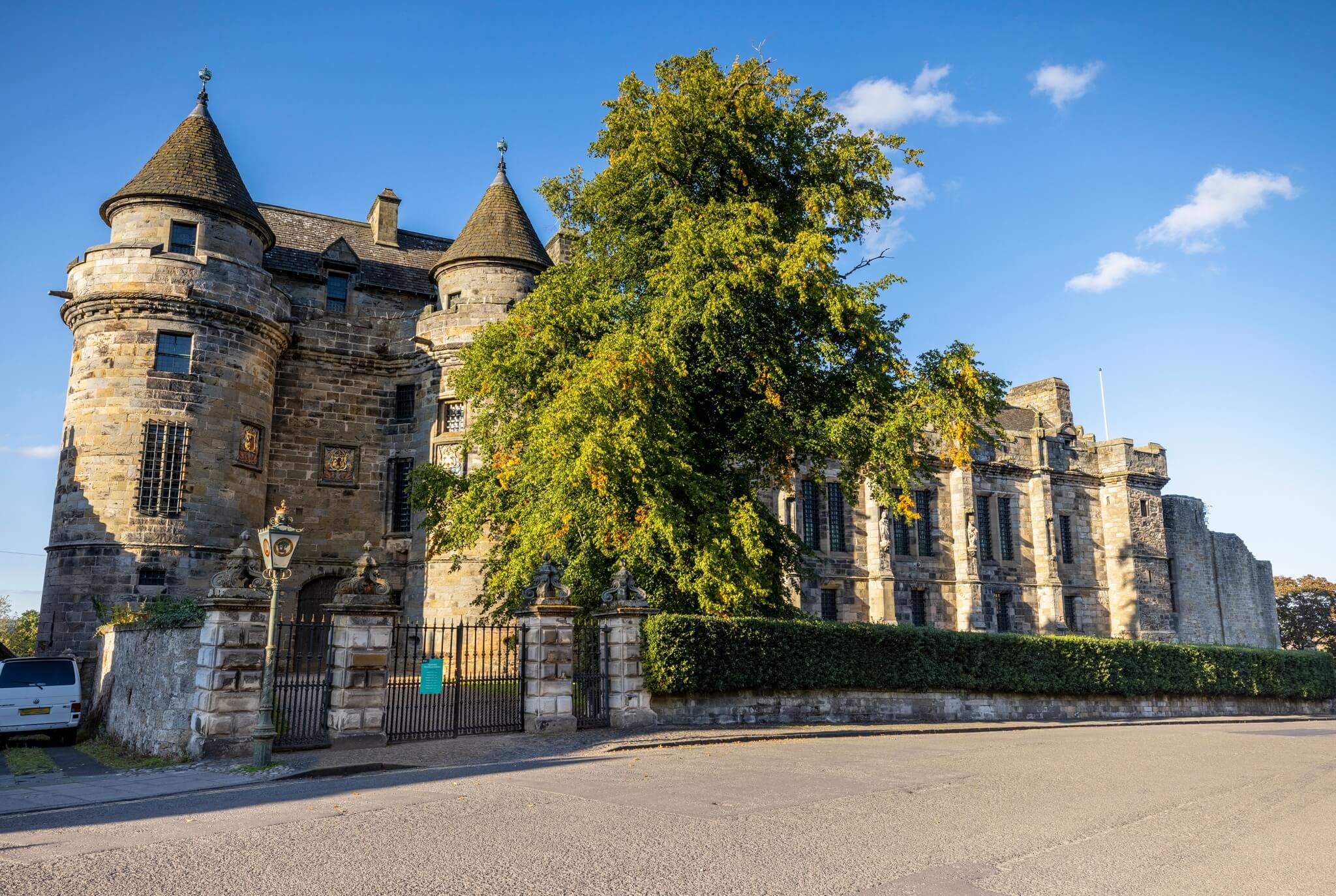
Falkland Palace and Garden
The picturesque town of Falkland in Fife is home to Falkland Palace. This royal dwelling was once the country residence of the Stewart kings and queens as they hunted deer and wild boar in the forests of Fife. Built between 1501 and 1541 by James IV and James V, the palace has some of the most exceptional architecture of its time in Britain. You will be amazed by the tapestries! The palace is also home to one of only two 16th century tennis courts in Britain.
If you are an Outlander fan, you might recognise Falkland which was used to portray Inverness in the hit TV series.
Scalloway Shetland

Scalloway and Scalloway Castle, Mainland, Shetland
© VisitScotland / Paul Tomkins
Scalloway was once the capital of the Shetland Islands and it has a fascinating maritime history. The town is built around a large, natural harbour so there are many connections to sea. During wartime the town was a base of operations for transporting troops and weapons to mainland Europe.
The town is home to ancient Scalloway Castle, completed in 1600, which was a residence of Earl Patrick – one of Scotland’s most notorious villains. A visit to the Shetland Islands is a chance to explore fascinating historical and natural sites like this.
Aberfeldy Perthshire
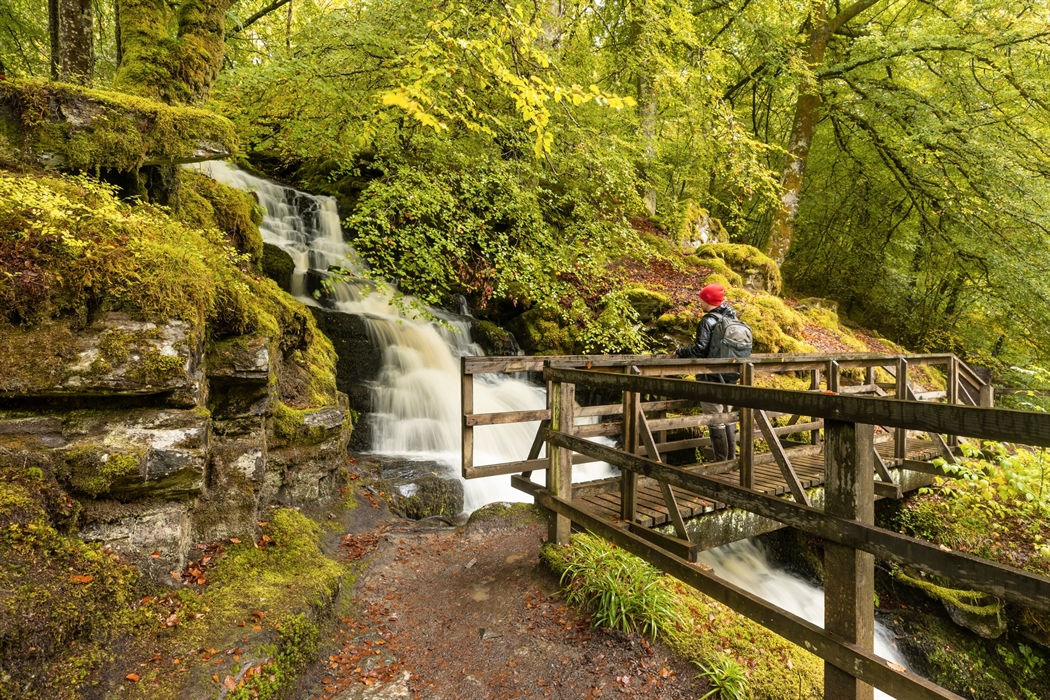
The Birks of Aberfeldy is a circular walk through mature mixed woodland on the western outskirts of Aberfeldy. The Birks of Aberfeldy were named after
This Perthshire town is situated on Scotland's longest river, the River Tay. Surrounded by ancient woodland, Aberfeldy is home to The Birks of Aberfeldy, made famous by our national bard Robert Burns. Burns wrote a poem about The Birks in 1787 and you can follow the footpaths for two miles up to the Falls of Moness, where you will discover spectacular views.
The town is also home to Dewar’s Aberfeldy Distillery, which is open throughout the year. Why not pop in and take a tour and a dram? The heritage exhibition is well worth a visit where you can learn more about John Dewar & Sons. You can also enjoy the unique experience of Aberfeldy Watermill, a bookshop, café and gallery housed in a listed former watermill. Nearby Castle Menzies is also well worth a visit!
Rothesay Bute
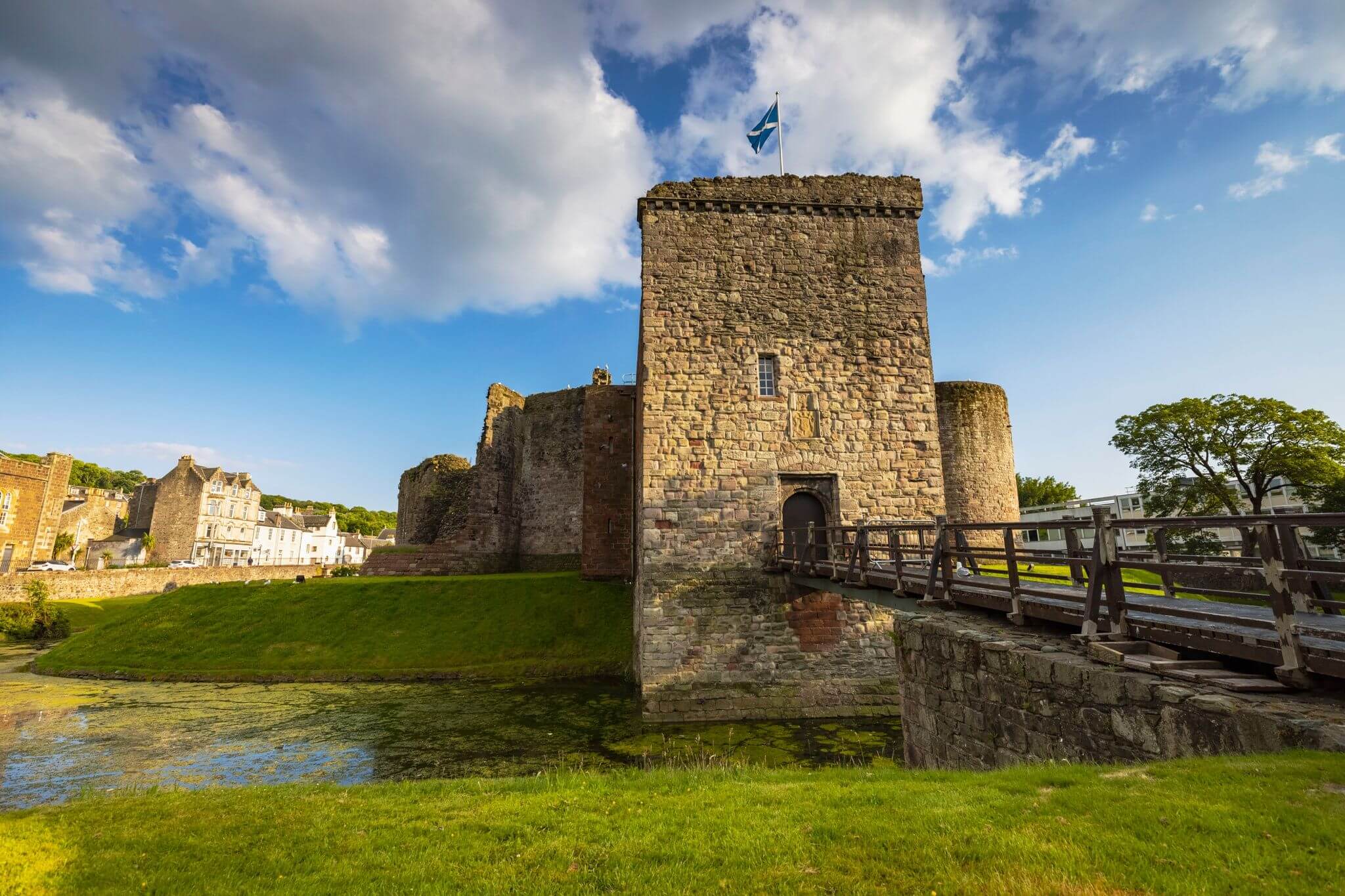
Rothesay Castle
The seaside resort of Rothesay is the main town on the Isle of Bute. The town has a traditional feel with many signs of its Victorian heritage including a splendid Victorian frontage cradling the romantic Rothesay Bay. Dominating the shoreline amongst a series of glorious esplanade gardens is the refurbished Isle of Bute Discovery Centre. This unique 1920s circular structure of cast iron and glass houses a cinema, theatre and many interactive displays as well as showcasing the best of Bute.
Visitors can also explore the impressive Rothesay Castle, its dungeons, thick outer walls and grand hall which are all now fully restored. Just behind it sits the fascinating Bute Museum.
Helmsdale Sutherland

Cairn Liath broch near Brora, Highlands
© VisitScotland / Luigi Di Pasquale
Today, Helmsdale is a name synonymous with salmon fishing, but the town and its picturesque harbour originally prospered because of the herring boom of the 19th century. The Timespan Heritage Centre uses an award-winning combination of life-size displays and audio-visual exhibits to tell the story of the area from earlier times.
From Helmsdale, a short drive up the Strath of Kildonan will take you to Baille an Or and Suisgill - sites of the 'great Sutherland gold rush' of 1869. The first finds were by Robert Gilchrist, a local man who returned home after 17 years in the Australian gold fields. His success brought others rushing to Kildonan and soon there was a shanty town of hundreds of prospectors. Within a year the gold rush was over, but small amounts are still found today.
Find experiences
JavaScript needs to be enabled to see this product search form. You can turn this on in your browser settings.
Other things you might like
Historic Attractions in Scotland
North Coast 500
Highland castles itinerary

Scotland's 8 cities
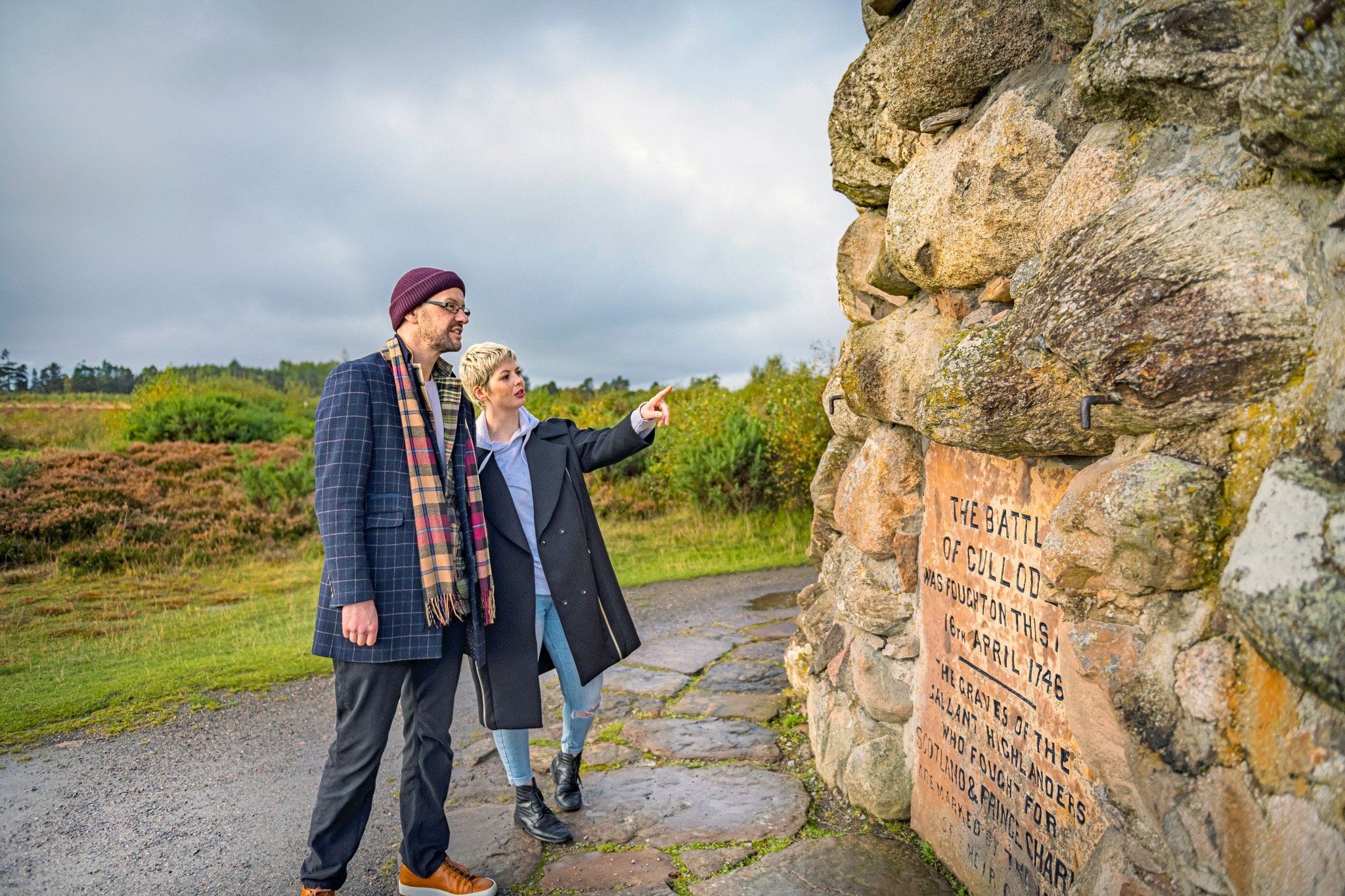
Experience & Research Your Ancestry In Scotland

The Best Hiking Trails in Scotland
Join our newsletter clan.
Get Scotland inspiration direct to your inbox. Don't miss the inside track from our Scotland experts on exciting trip ideas, unique attractions and hidden gems loved by locals.

Sign Up Today
Start your 14 day free trial today

History Hit Story of England: Making of a Nation
10 of the Best Historic Sites in Edinburgh
From gothic monuments to majestic castles, edinburgh is home to a range of thrilling historic sites..

Lucy Davidson
08 jul 2022, @lucejuiceluce.
Nicknamed ‘Auld Reekie’, Scotland’s capital Edinburgh is both ancient and scenic. The winding, characterful cobbled streets of the Old Town give way to stunning Georgian architecture of the New Town, and both are full of historic gems that reflect the city’s multi-faceted and varied past. Together, the Old and New Towns of Edinburgh have been awarded UNESCO World Heritage Site status.
Nestled amongst the bustling city are hidden gems such as Mary King’s Close, which offers an insight into the lives of some of Edinburgh’s poorest residents until the 18th century. In contrast, regal gems such as Edinburgh Castle and Holyroodhouse Palace stand as prominent landmarks that have hosted some of the most famous figures in Scottish history, and are now popular tourist spots.
Here’s our selection of 10 of the best historic sites that Edinburgh has to offer.

1. Holyroodhouse Palace
Holyroodhouse Palace in Scotland has a fascinating history stretching back to the 12th century, and is now the official Scottish residence of the Queen. Perhaps the most famous chapter of Holyroodhouse Palace’s tale is linked to Mary, Queen of Scots however. Not only was the palace Mary’s main home between 1561 and 1567, it was where she married two of her husbands – Lord Darnley and the Earl of Bothwell. It was also at Holyroodhouse Palace that she witnessed the brutal murder of her private secretary David Rizzio, when a group of nobles led by Darnley burst into her apartments and stabbed him multiple times.
In the 20th century George V modernised Holyroodhouse, before in the 1920s it was formally designated as the royal family’s official residence in Scotland. Today, Holyroodhouse Palace is open to visitors to explore its eminent halls, with most of what remains dating from the 17th century. The State Apartments may be viewed that contain a host of stunning furniture, portraiture, and other artwork, including a collection of Renaissance frescos bought by Prince Albert and a number of French tapestries bought by Charles II.

2. Mary King's Close
Reopened to the public in 2003, Mary King’s Close is an historic close located under buildings on the Royal Mile, in the historic Old Town area of Edinburgh. Named after Mary King, a merchant burgess who lived on the Close in the 17th century, the close was once the bustling home of Edinburgh’s working class residents, who lived and worked in poverty there. Partially demolished and buried due to the building of the Royal Exchange in the 18th century, the area was later excavated and reopened.
In the years since it closed, Mary King’s Close became shrouded in myth and legend, with tales of hauntings and ghostly happenings abounding. Today, Mary King’s Close is open for tours.

3. Dalmeny House
Located to the north west of Edinburgh, Dalmeny House is a Gothic revival mansion designed by William Wilkins and completed in 1817. Home to the Earl and Countess of Rosebery, Dalmeny House was the first in Scotland to be built in the Tudor Revival style, and is a category A listed building, while the grounds are included in the Inventory of Gardens and Designed Landscapes in Scotland.
Today, the house remains private, but in the summer months is opened to the public. Amongst a collection of stunning paintings, the house is also home to the world’s largest collection of Napoleonic memorabilia.

4. Edinburgh Castle
A royal residence, vital stronghold and iconic structure, Edinburgh Castle is one of the most famous castles in the world. Known by its English name since the invasion of the Angles in 638AD, the first mentions of Edinburgh Castle occurred in 600 when it was called “Din Eidyn” or “the fortress of Eidyn”. However, even before the Angles Edinburgh Castle’s location had served as a vital stronghold for centuries. Archaeologists have found evidence of human settlement on the rock on which the castle sits as early as 900 BC, during the late Bronze Age. Over the following centuries, Edinburgh Castle continued to play a role as a crucial defensive structure as well as becoming an integral part of Scotland’s history.
Today, visitors to Edinburgh Castle can explore the castle’s history through a series of guided tours and exhibitions. Amongst its many attractions are the Scottish National War Memorial and National War Museum, that give an insight into Scotland’s fascinating military history.

5. Greyfriars Kirk and Kirkyard
Greyfriars Kirk traces its history to the south-west parish of Edinburgh, which was founded in 1598. In the wake of the Scottish Reformation, the grounds of the abandoned friary were repurposed as a cemetery, upon which the current church was built between 1602 and 1620. Greyfriars Kirk is equally, if not more famous for its Kirkyard, which has been dubbed ‘the most haunted cemetery in the world’. In the 1670s, Lord Advocate to Charles II , George ‘Bloody’ Washington, imprisoned 1200 Covenanters on an adjoining field for 4 months, treating them so inhumanely some view it as the first-ever concentration camp.
Bloody Mackenzie was himself buried in Greyfriars’ ‘Black Mausoleum’ which was broken into by a homeless man in 1999. Since then, visitors complain of unexplained physical attacks, some leaving with bruises, scratches, bite marks and even burns. Bloody Mackenzie and his Covenanter enemies have seemingly united in the spirit world to torment the living. The Kirk is also known for having inspired some of the names of characters from Harry Potter – look out for Thomas Riddle’s grave.

6. St Giles’ Cathedral
St Giles’ Cathedral is located on the famous Royal Mile, in the heart of the Old Town of Scotland’s capital city, Edinburgh . St Giles’ foundation is normally dated to 1124 and attributed to David I, King of Scotland. It is dedicated to Saint Giles, who was a hermit active in the Rhone in the 6th century. The first church on the site was a small, Romanesque building, of which only a few fragments remain. In the 14th century it was replaced by the current building, which was enlarged between the 14th and early 16th centuries.
Today, St Giles’ Cathedral is a popular tourist attraction that holds regular religious services as well as a plethora of cultural events such as organ recitals. Volunteer guides are available to answer questions, and can conduct guided tours upon request.

7. Scott Monument
Located in Princes Street Gardens in the heart of Edinburgh, the Victorian Gothic style Scott Monument was built from 1838 to commemorate the author Sir Walter Scott. From 1832, a competition was held for its design and was entered under a pseudonym by 45-year-old joiner, draftsman and self-taught architect George Meikle Kemp. It is the second-largest monument to a writer anywhere in the world.
Standing at 200ft tall, the Scott Monument features a series of viewing platforms the whole way up which offer stunning views over Prince’s Street Gardens and towards Edinburgh Castle. The viewing platforms also allow the viewer to appreciate the 64 sculptures adorning the monument, which depict 64 figures of characters from Scott’s novels. The very top is reached by 287 steps.

8. Rosslyn Chapel
Rosslyn Chapel near Edinburgh in Scotland is the beautiful 15th century creation of the third Prince of Orkney, William St Clair. Begun in 1446 and with its foundations completed in 1450, Rosslyn Chapel was actually named the “Collegiate Chapel of St Matthew”. Whilst Rosslyn Chapel may seem like a finished church, it is actually thought to be incomplete, with William intending it to be a cross-shaped church rather than a rectangular one.
Part of what makes Rosslyn Chapel such a masterpiece is its collection of stone carvings which cover virtually every inch of its walls. From depictions of what has been interpreted by some as Indian corn to more local rural images and, of course, many of prominent religious figures – there is something to see in every nook and cranny of Rosslyn Chapel. However, it is the carvings linked to the Knights Templar which have gained the most attention for Rosslyn Chapel, particularly following the release of the 2003 novel “The Da Vinci Code” by Dan Brown, in which the church played an important role. Infused with mystery and legend, these carvings draw tourists, artists and even royalty to Rosslyn Chapel. Guided tours are available to explain their meanings.

9. Hopetoun House
Owned by the Hopetoun House Preservation Trust, Hopetoun House is a country house near Queensferry and Category A listed building. The house was built between 1699 and 1701, but was hugely extended in 1721. The famous and magnificent entrance hall dates from 1752. The south wing of the house is lived in by Adrian Hope, 4th Marquess of Linlithgow. Indeed, the same family have lived there for 300 years. The house interior, complete with opulent gilding and classical motifs, reflects early 18th century aristocratic grandeur.
The magnificent building is recognisable as a filming location of the television series Outlander. Also on the estate is Midhope Castle, which was used as Lallybroch, the Fraser family home. The castle exterior is in good condition, though the interior is derelict. Today, the house is open to the public.

10. House of the Binns
The House of the Binns, or simply the Binns, is a historic house in West Lothian and the seat of the Dalyell family. Written records of a house on the site begin in 1335. There was certainly a manor house there by 1478. The house today is principally reflected in its extensions of the mid 18th and early 19th centuries, and the house is generally regarded as being in the Scottish baronial style with elements of Gothic.
The estate spreads over 200 acres of parkland with views to the north, across the River Forth to the Highlands, and south over the Pentland Hills. The house is home to a collection of furniture, porcelain and portraits which trace the family’s lives and interests. The house is open daily, and particular highlights are plaster ceilings which date from 1630.

Site Search
The 46 best places to visit in scotland.
Scotland is a dream destination for those who love exploring historic houses, castles and gardens, with some of the finest in the UK
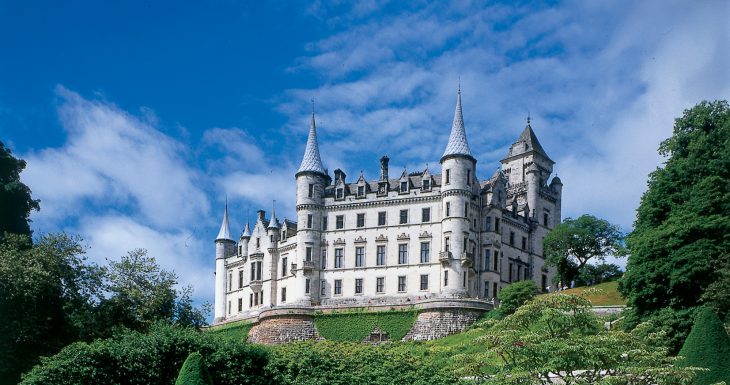
A visit to Scotland isn’t complete without a visit to its illustrious historic houses, castles and gardens. From Skaill House in the Orkneys to Floors Castle on the Scottish Borders, it’s worth taking account of where you can visit when making a day trip to Scotland or a longer excursion. Here, we list the best places to visit in Scotland, with links to each house and garden in their specific region. You can also view a map of all the houses and gardens on our webpage here .
The Highlands, West Highlands & Islands
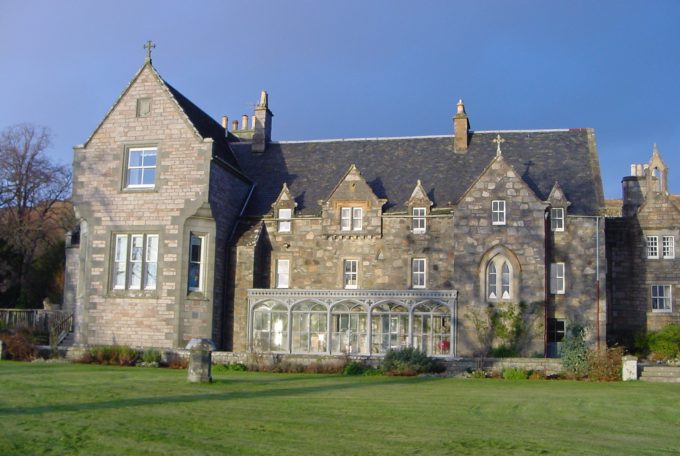
Ardchattan Priory Gardens, Argyll
A garden has existed at Ardchattan for over 700 years, since Valliscaulian monks, from a little know order in Burgundy, first settled here, on the north shore of Loch Etive.
Facing south, with spectacular views over Loch Etive, one can look east to Ben Cruachan and west to the hills of Mull, the monks chose their site well.
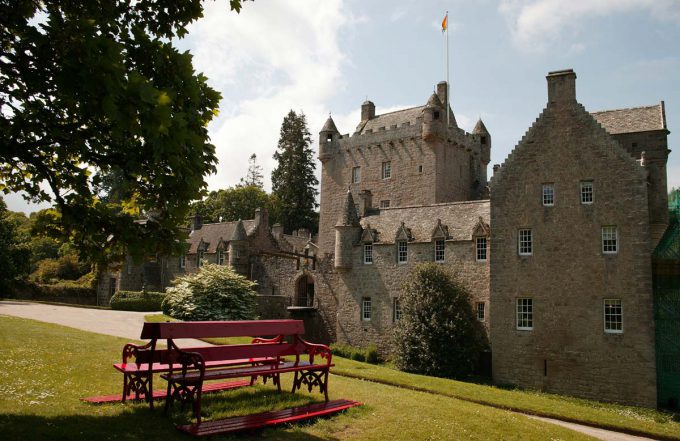
Cawdor Castle, Nairn
Cawdor Castle dates from the late 14th-century, having been built as a private fortress by the Thanes of Cawdor, with the ancient medieval tower built around the legendary holly tree – wherever you look, Cawdor Castle is steeped in intrigue and history.
Later additions, mainly from the 17th-century, were all built in a Scottish style with slated roofs over walls and crow-stepped gables of local stone. This style gives Cawdor a strong sense of unity, and the massive, severe exterior belies an intimate interior that gives the place a surprisingly personal, friendly atmosphere.
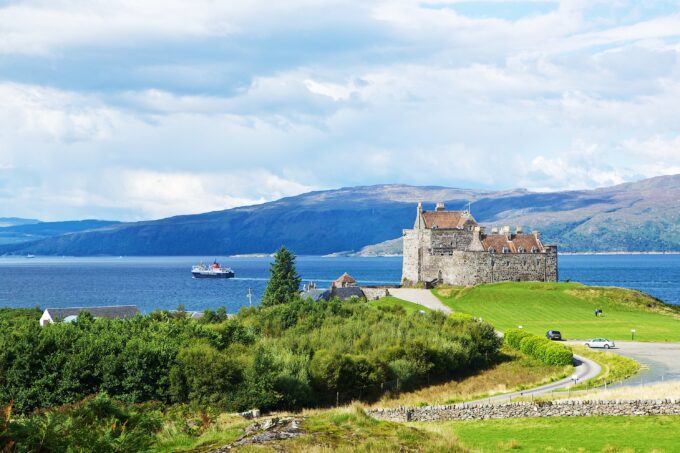
Duart Castle, Isle of Mull
Duart Castle proudly guards the sea cliffs of the Isle of Mull, while enjoying one of the most spectacular and unique positions on the West Coast of Scotland.
Brought back from ruin in 1911, the Castle treasures 800 years of history of one of Scotland’s oldest Clans, The Macleans, and is one of the last surviving privately owned Clan Castles in Scotland.
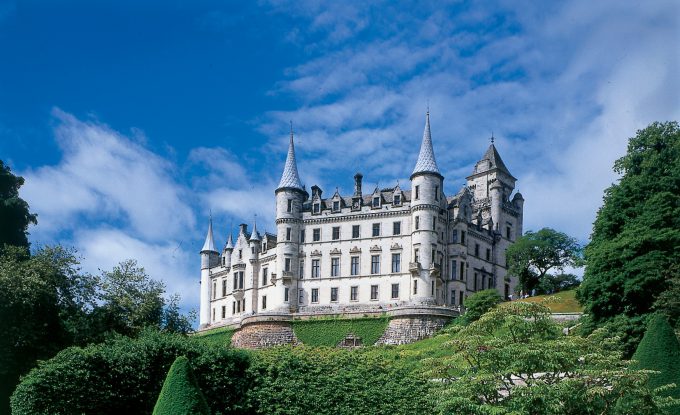
Dunrobin Castle, Golspie
Dunrobin Castle is the most northerly of Scotland’s great houses and the largest in the Northern Highlands with 189 rooms. The castle is also one of Britain’s oldest continuously inhabited houses dating back to the early 1300s, home to the Earls and later, the Dukes of Sutherland.
The Castle, which resembles a French chateâu with its towering conical spires, has seen the architectural influences of Sir Charles Barry, who designed London’s Houses of Parliament, and Scotland’s own Sir Robert Lorimer.
Discover behind the scenes at Scottish historic houses
Historic Houses offers members behind the scenes videos of life behind the scenes at houses and gardens across the UK, including at several houses and gardens in Scotland. In the below video, we look behind the closed gates of Duart Castle on the Isle of Mull during the 2020 lockdown.
...also in the Highlands, West Highlands & Islands
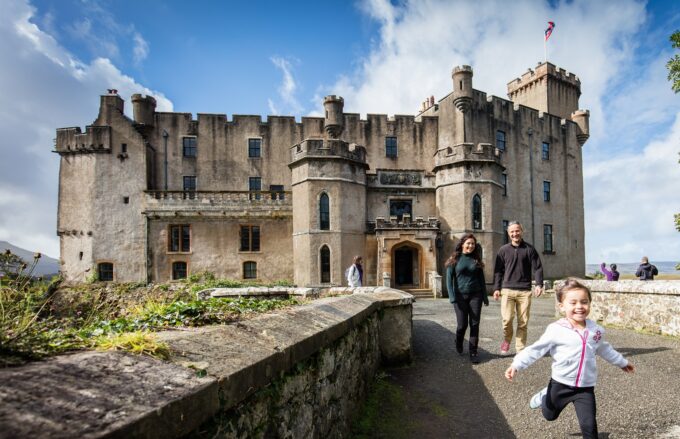
Dunvegan Castle, Isle of Skye
Built on a rocky outcrop on the shores of Loch Dunvegan, Dunvegan is the oldest continuously inhabited castle in Scotland and has been the ancestral home of the Chiefs of Clan MacLeod for 800 years.
On display are many fine oil paintings and clan treasures, the most famous of which is the Fairy Flag. Legend has it that this sacred Banner has miraculous powers and when unfurled in battle, the clan MacLeod would invariably defeat their enemies.
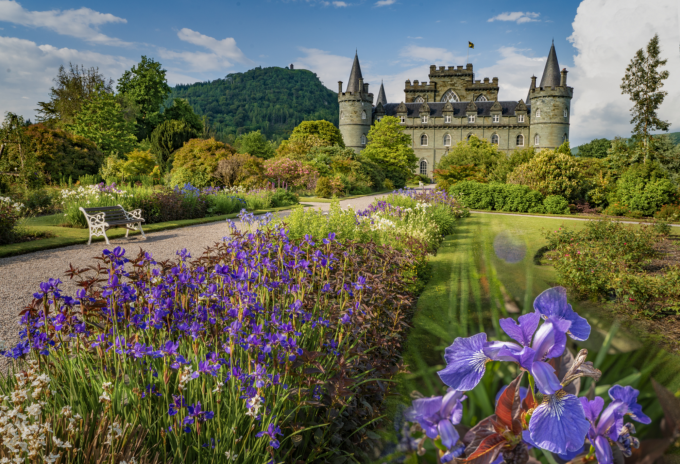
Inveraray Castle, Argyll
Inveraray Castle is an 18th-century turreted castle, seat of the Clan Campbell and home to the Dukes of Argyll.
On the shores of Loch Fyne and in the majestic West Highlands of Scotland with formal gardens famous for their rhododendrons and azaleas. Also recognised as Downton Abbey’s ‘Duneagle Castle’. Glasgow Central & Queen Street (60 miles) is the closest train station.
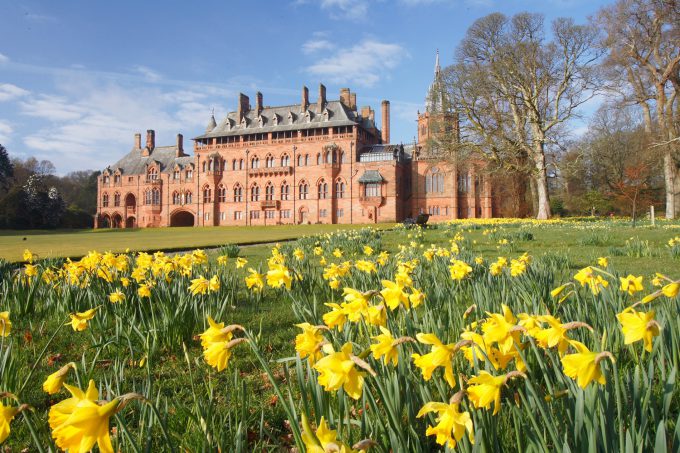
Mount Stuart, Isle of Bute
Mount Stuart, Britain’s most spectacular Victorian Gothic house, offers a memorable day out for the whole family.
Walks on the beach, discoveries in the gardens, dazzling interiors, unique architectural details, seasonal events and exhibitions make Mount Stuart a place that captures the imagination! Situated on the Isle of Bute, just 90 minutes from Glasgow.
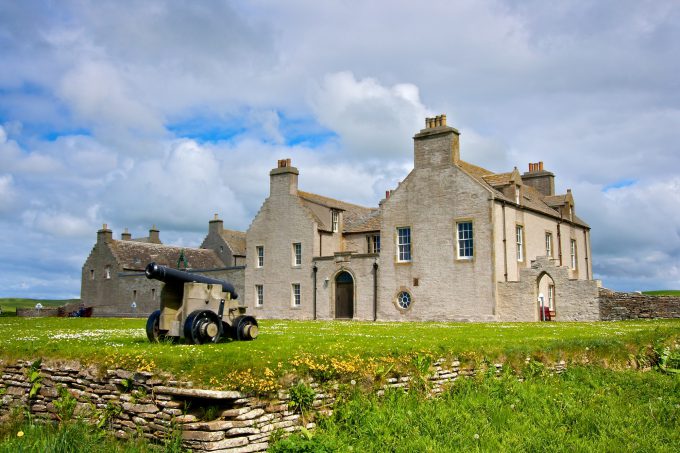
Skaill House, The Orkney Islands
Skaill House is the finest 17th-century mansion in Orkney. Home of William Graham Watt, 7th Laird of Breckness, who unearthed the World famous neolithic village of Skara Brae in 1850. Covering thousands of years of history, Skaill House is renowned for its contribution to Orkney’s diverse and exciting past.
The house was originally built in 1620 by Bishop George Graham (Bishop of Orkney 1615-1638), and has been added to by successive generations over the centuries. In its 400 year evolution, all 12 Lairds have been related, contributing to the history and collections in the house.
Visit Scotland sustainably
We’re really keen to ensure that your trip to historic houses and gardens in Scotland doesn’t have to cost the earth, so we’ve teamed up with Good Journey to help you start planning your days out in Scotland using the cheapest, greenest means possible. Good Journey are adding new guided routes all the time, so take a look at their website for to start planning your trip to Scotland.
Grampian and Central
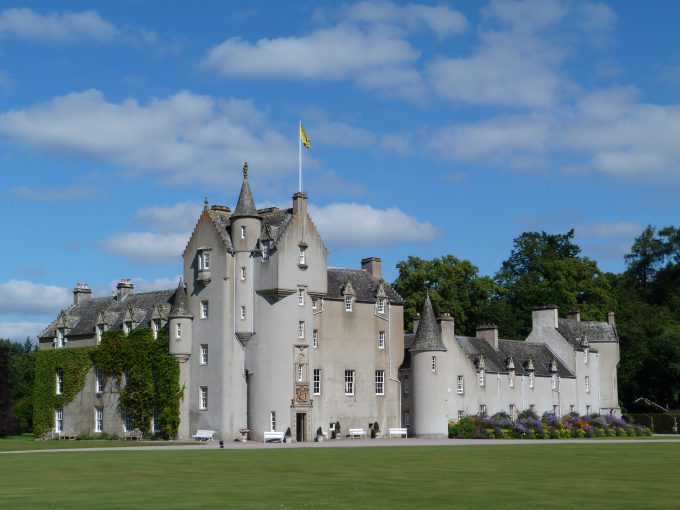
Ballindalloch Castle, Banffshire
Ballindalloch Castle is first and foremost a much-loved family home and one of the very few privately owned castles to be lived in continuously by its original family.
Built originally in 1546, the Castle has been home to the Macpherson-Grants ever since, and Guy Macpherson-Grant, his wife, Victoria, and their three young children, are the 23rd and 24th generations of the family to live here.
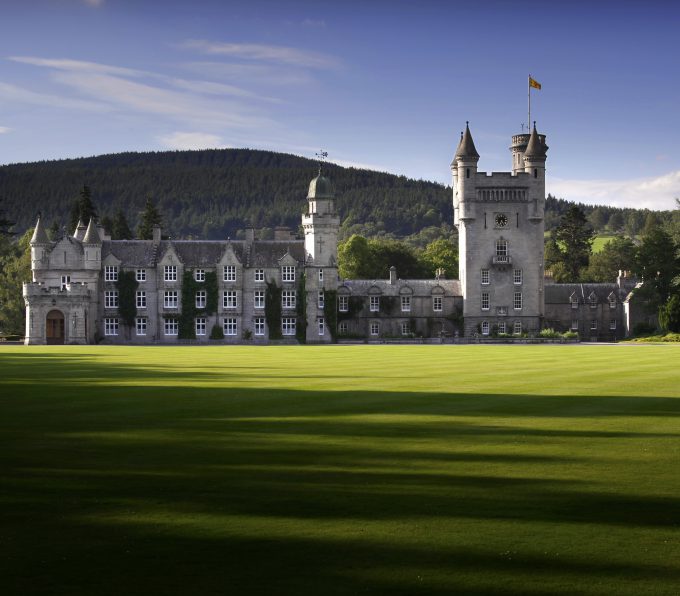
Balmoral Castle, Ballater
The foundation stone for Balmoral Castle was laid by Queen Victoria on 28th September 1853 and can be found at the foot of the wall adjacent to the West face of the entrance porch.
Before the foundation stone was placed in position Queen Victoria signed a parchment recording the date. This parchment, together with an example of each of the current coins of the realm, was then placed in a bottle, inserted into a cavity below the site prepared for the stone.
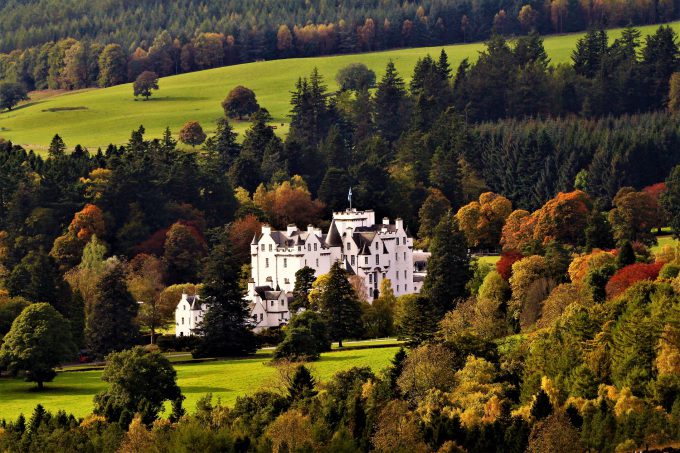

Blair Castle, Pitlochry
You’ll find Blair Castle in the traditional Scottish village of Blair Atholl at the entrance to the Cairngorms National Park.
Surrounded by hills and peaceful countryside, the castle has some of Scotland’s finest views. The castle has been transformed through the ages, from its cold medieval beginnings to become a fine Georgian mansion and finally a Victorian castle in the Baronial style.
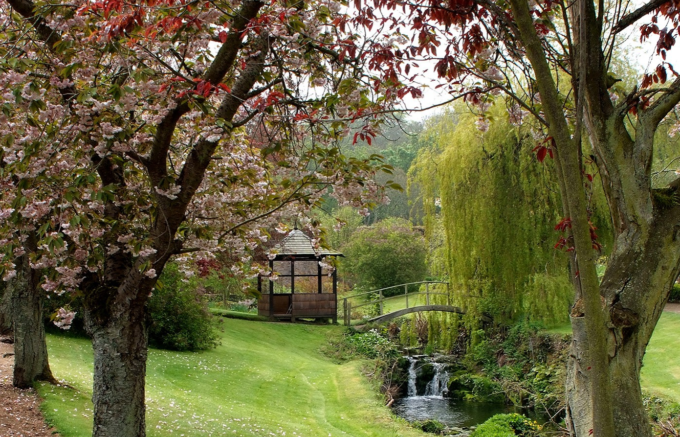
Cambo House Gardens, near St Andrews
Cambo’s 2.5 acre walled garden dates from the 1800’s and our visitors keep describing it as ‘stunning’! We endeavour to create areas of year round interest and the garden is constantly changing, developing and innovating through the passions of our horticulture team.
From early interest in our winter gardens (highlighting our Plant Heritage national collection of snowdrops) through to our late season naturalistic plantings and prairie garden (unique in Scotland!) there is always a reason to visit Cambo.
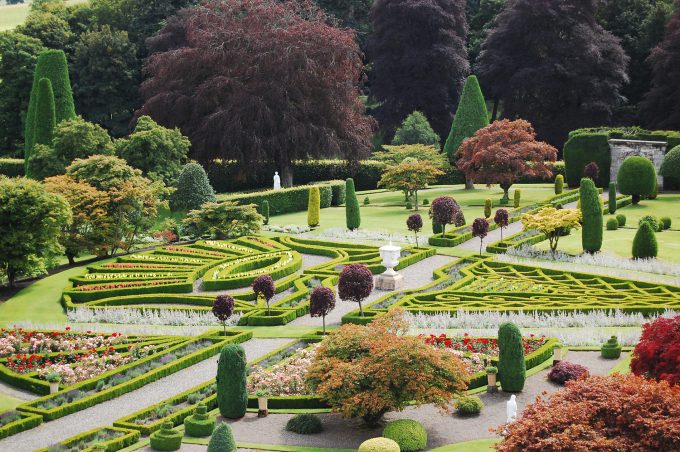
Drummond Castle Gardens, Crieff
It is a composite garden, restructured in early Victorian times and renewed again in the 20th century when the garden framework and the exceptional interest of the original 19th century design were carefully preserved.
Drummond Castle was built on a rocky outcrop by John, 1st Lord Drummond around 1490. The 2nd Earl, a Privy Councillor to James VI and Charles I, succeeded in 1612 and is credited with transforming both the gardens and the castle between 1630-1636. The keep still stands but the rest of the castle was restored and largely remodelled by the 1st Earl of Ancaster in 1890.
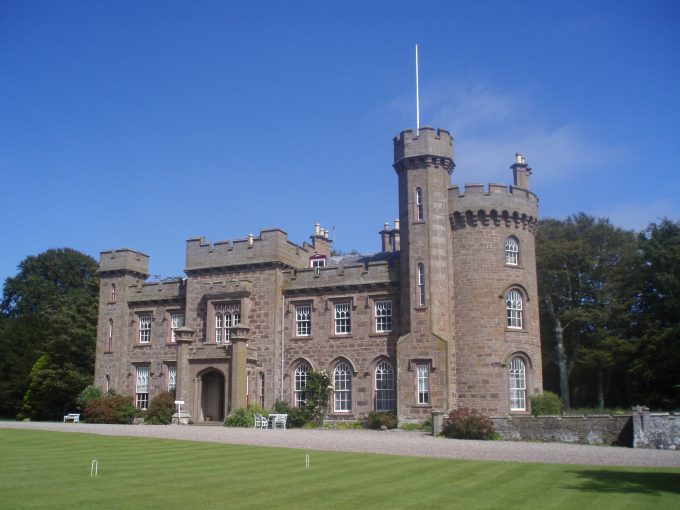
Dunninald Castle & Gardens, Montrose
Dunninald Castle is a family home with an acclaimed walled garden, set in a planned landscape of woods and wild garden. Dunninald was built in 1824 by the architect James Gillespie Graham in the Gothic Revival style.
Guided tours of the castle explain the history of the house, the collections of furniture, paintings and displays of fine needlework photographs and memorabilia, examples of fine plasterwork and trempe l’oeil are also on show. Tours take approximately 40 minutes and start on the hour and half hour.
The fascinating stories of Scottish historic houses
There are few paintings which attract as much interest and admiration as the portrait of Lady Elizabeth Murray and Dido Elizabeth Murray, by the Scottish artist David Martin, which hangs in the Ambassador’s Room at Scone Palace . The story of Dido Belle’s life has been told many times, but who better to hear it from than William Mansfield himself?
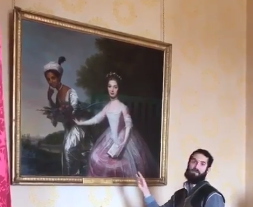
...also in Grampian and Central
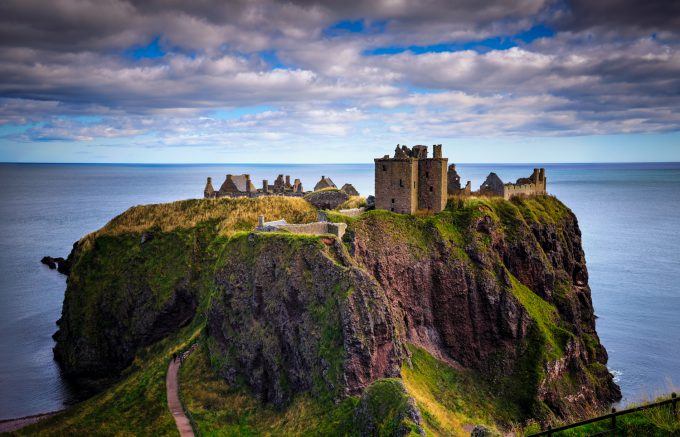
Dunnottar Castle, Stonehaven
Dunnottar Castle is a dramatic and evocative ruined cliff top fortress which was the home of the Earls Marischal, once one of the most powerful families in Scotland. Steeped in history, this romantic and haunting ruin is a photographer’s paradise, a history lovers dream and an iconic tourist destination for visitors the world over.
Visit Dunnottar Castle for your own unforgettable experience and discover the importance of Dunnottar – an impregnable fortress that holds many rich secrets of Scotland’s colourful past.
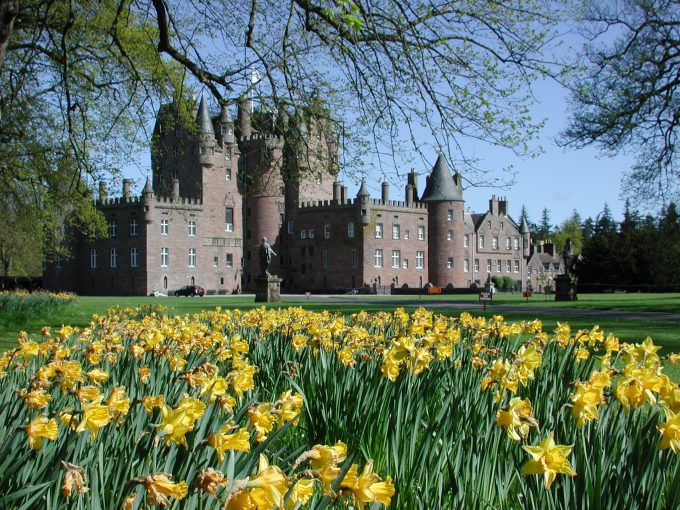
Glamis Castle, Angus
Royal residence of the Lyon family since 1372 and legendary setting of Shakespeare’s ‘Macbeth’.
Rebuilt in elaborate, turreted French chateau style in late 17th-century incorporating some 14th-century work, it is spectacular. Fine furnishings, paintings and armour.
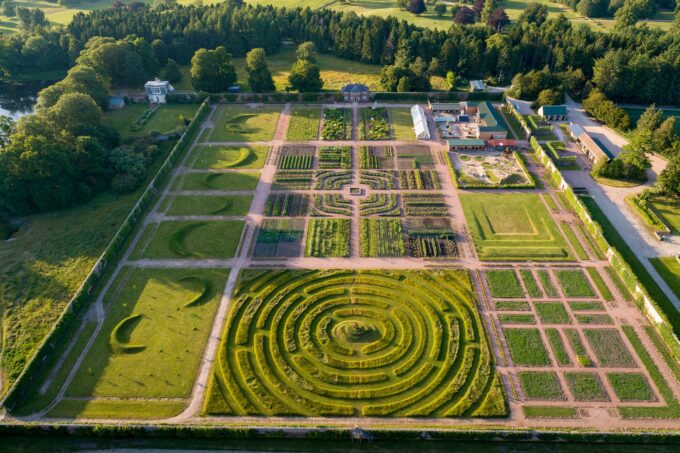
Gordon Castle Walled Gardens, Moray
A hidden gem situated between the River Spey and the Moray Coast, Gordon Castle Walled Garden is one of Scotland’s best kept secrets.
At almost eight acres in size it is one of the oldest and largest kitchen gardens in Britain and has been lovingly restored to its former glory with a modern design by world famous designer Arne Maynard. An oasis of peace and tranquillity, the garden is also a hive of activity.
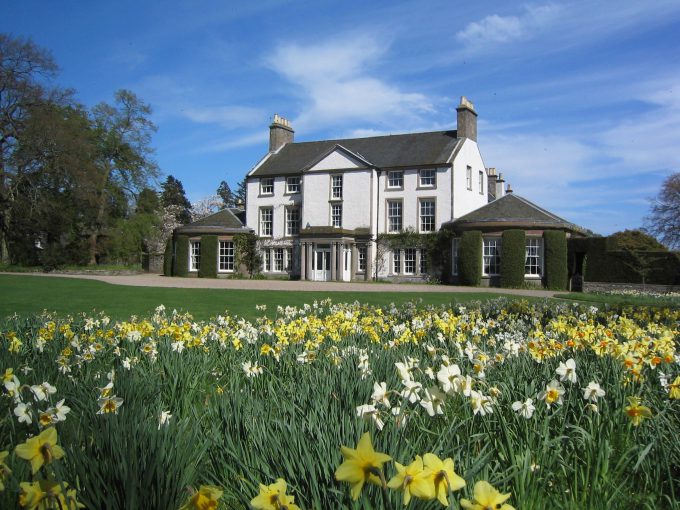
House of Pitmuies, Angus
Pitmuies has known three periods – the first of a house recorded in the late 1500s. Remains of that house, with its worn stone spiral staircase, faces south over the garden.
The grander west facing front is believed to date from 1680’s. Pitmuies was modernised to the 18th century standards some hundred years later when the two pavilions were added, one a music room and one a library. Also the ionic pillared porch and alterations to the windows were deemed necessary. The arched entrance into the courtyard carries date stones 1770 and 1820.
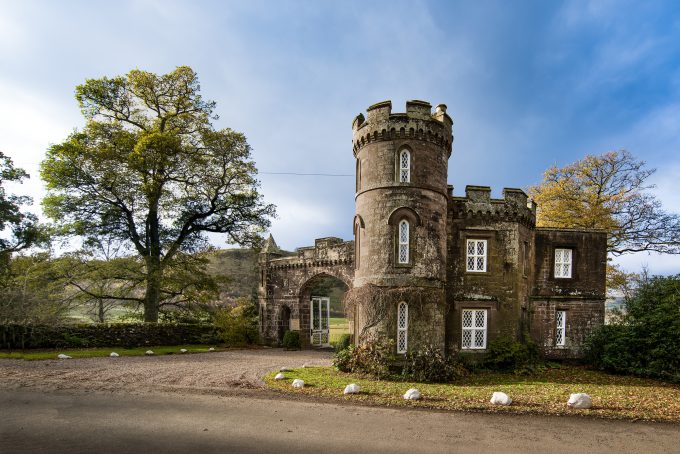
Monzie Castle, Crieff
The oldest part of the castle dates from 1634. The main part was completed in 1795 by Robert Paterson, previously clerk of works to the celebrated Robert Adam.
Monzie Castle is a large castellated mansion which incorporates a small early 17th-century L-plan tower house, much extended and remodelled in 1791. It was a property of the Campbells from early times until 1869, when it was sold to the Johnstones of Lathrisk.
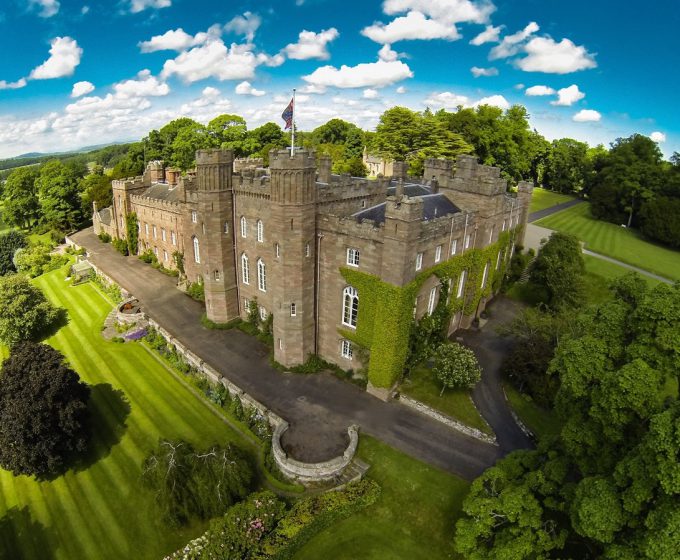
Scone Palace, Perth
Built on the site of Scone Abbey and incorporating the medieval bishops’ palace and Moot Hill, place of coronation for Scottish Kings, and extended in gothic style from 1803. Superb collection of objets d’art, including items of Marie Antoinette bought by the 2nd Earl of Mansfield.
The 1st Earl (a notable lawyer) freed his own black slave and in 1772 declared slavery ‘odious’ and unacceptable in Britain. John Louden laid out gardens contemporary with the house’s gothic enlargement. The pinetum, begun 1848 and extended in 1984, contains an outstanding conifer collection and the original Douglas fir, grown from seed sent in 1826 from America by David Douglas, a Scone gardener.
Modern art meets historic architecture at Kelburn Castle
The idea was simple and original: take the vibrant and often transient art form of Brazilian graffiti, out of its predominantly urban context and apply it to the ancient and permanent walls of a historic rural castle in Scotland.
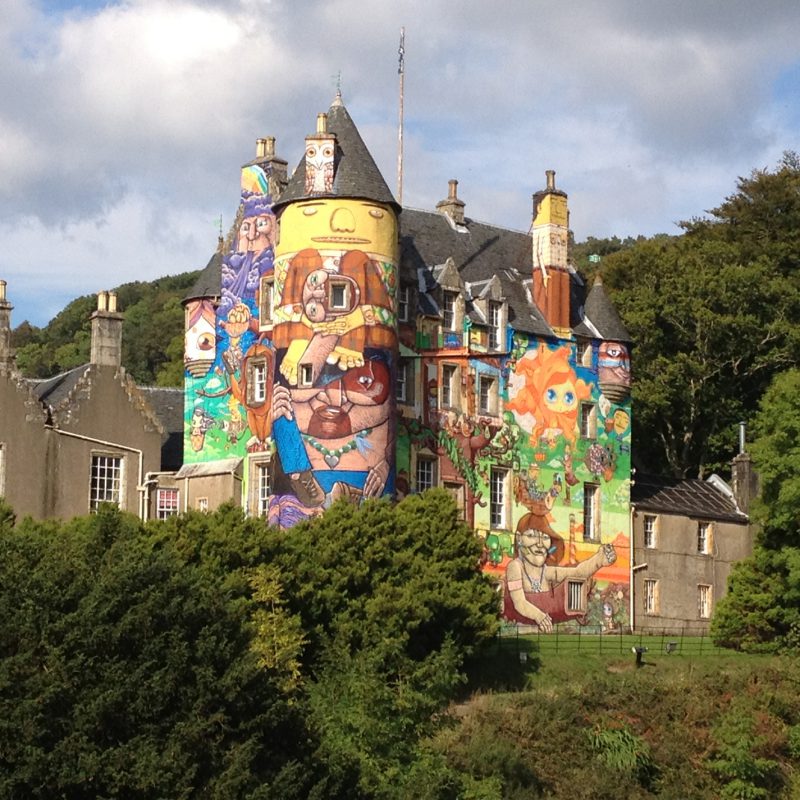
Strathclyde and Dumfries & Galloway
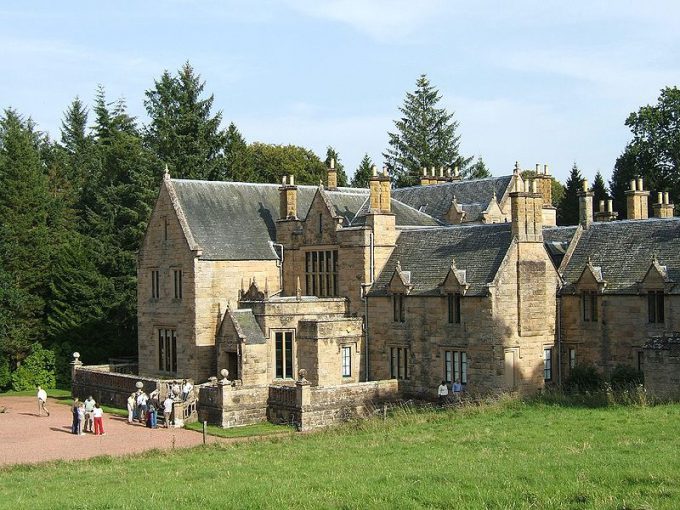
Corehouse, Lanark
Corehouse is a pioneering example of the Tudor architectural revival in Scotland, designed by Sir Edward Blore and situated above the famous Corra Lynn Falls of Clyde.
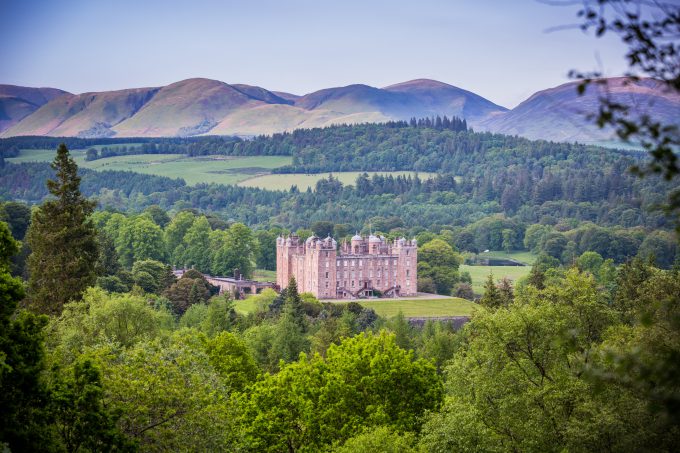
Drumlanrig Castle, Thornhill
Drumlanrig Castle is the Dumfriesshire home of the 10th Duke of Buccleuch & Queensberry.
The Castle is one of Scotland’s finest examples of 17th-century Renaissance architecture. Towering over the Nith Valley, Drumlanrig houses items from the world-renowned Buccleuch Collection including works by Rembrandt and Holbein.
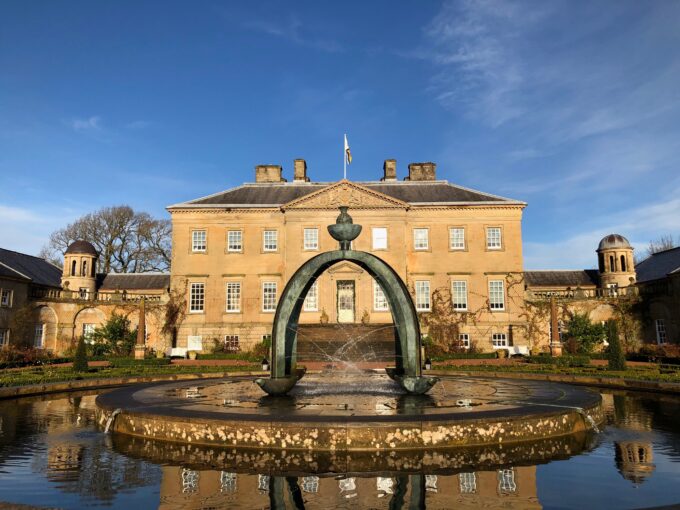
Dumfries House, Ayrshire
Georgian Gem, nestling within 2,000 acres of scenic Ayrshire countryside in south-west Scotland. Commissioned by William Crichton Dalrymple, the 5th Earl of Dumfries. The House was designed by renowned 18th-century architect brothers John, Robert and James Adam and built between 1754 and 1759.
Recognised as one of the Adam brothers’ masterpieces it remained unseen by the public since it was built 250 years ago until it opened its doors as a visitor attraction in June 2008.
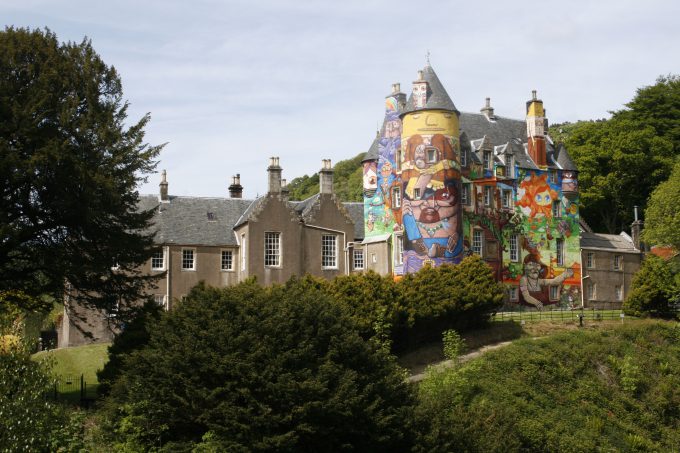
Kelburn Castle, Fairlie
Our 13th-century castle has had an amazing makeover courtesy of a team of Brazilian artist and is the home of the Boyle family. The surrounding landscape offers dramatic walks, coastal views, breathtaking gardens and many features of historical interest.
There is no written record of when Kelburn Castle was first built, but it is thought to be around 1200. The original Norman Keep was added in 1581 and the new castle and old castle were skillfully joined and re-roofed so that the two periods are now difficult to distinguish from the outside.
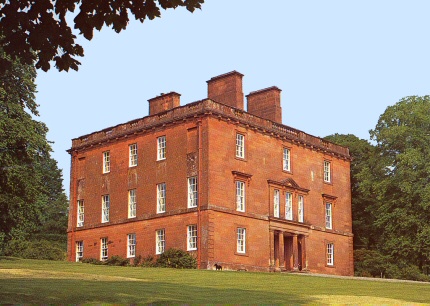
Rammerscales, Lockerbie
A neat, square ashlar Georgian house with a cornice and balustrade and a loggia with Tuscan pillar; unaltered since it was built in 1760 and with wide views over Annandale.
The long gallery completed in the 1770s was converted in the 19th century to house the owner’s outstanding library. Modern paintings and works of art include those by Rodin, Hepworth, Segonzac, Lowry and Wyndham Lewis.
Book your events tickets in Scotland
While visiting castles and gardens in Scotland is one way to make the most of your visit to the country, booking yourself onto an event run by a historic house is by far the best means of creating new memories. We have a dedicated page for exploring events at historic houses across the UK, and here you can find a pre-filtered list of events at Scottish venues.
Lothian and the Scottish Borders
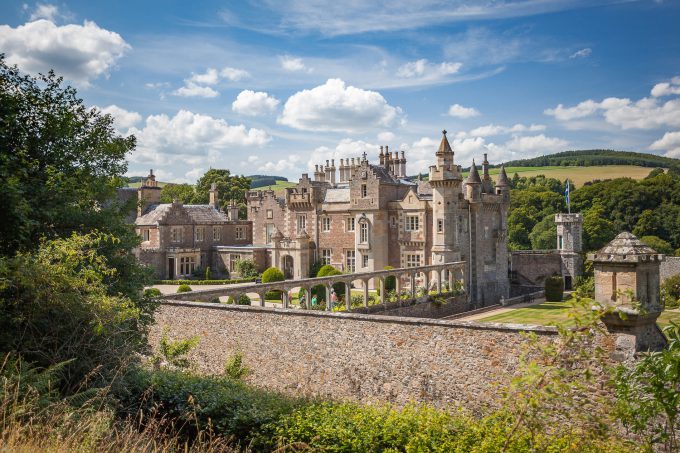
Abbotsford, Melrose
Visit Abbotsford, a monument to the tastes, talents and achievements of its creator, one of Scotland’s most important national figures; a renowned 19 th century writer and ‘Great Scot’ who changed how the world saw Scotland and Scotland saw itself.
Located in the heart of the beautiful Borders countryside, Abbotsford was built by Sir Walter Scott in the 19th-century as a family home, work space and private museum and his interests can be seen in the amazing gothic architecture and interiors jam-packed with fascinating curios, artefacts, books and stories galore.
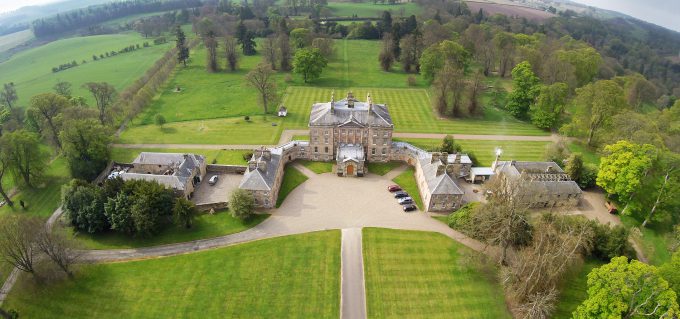
Arniston House, Midlothian
Home to the Dundas family for nearly 450 years, Arniston is a 6,000+ acre estate nestled just 11 miles from Edinburgh.
Featuring a magnificent William Adam Palladian style Mansion House, Arniston is proud to offer guests a guided tour with family members to learn more about the architect, the local history and of course, the Dundas family heritage.
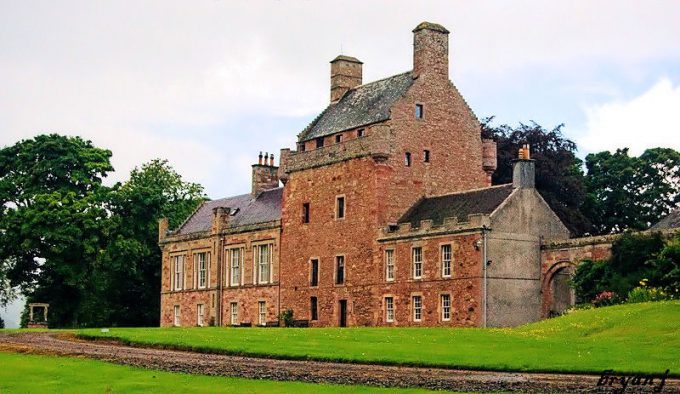
Bemersyde House, Melrose
With a 16th-century peel tower at its core Bemersyde House is an imposing house set within fine gardens and grounds close to the burgh of Melrose in the Borders.
The gardens were laid out by Field Marshal Earl Haig.
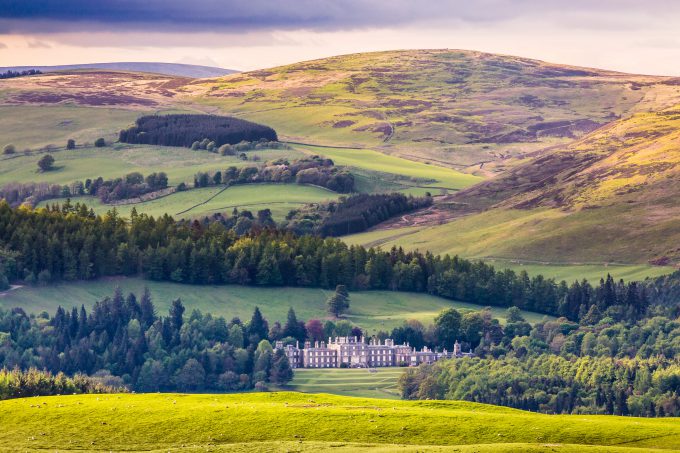
Bowhill House & Estate, Selkirk
Bowhill House has been the principal home of the Scotts of Buccleuch for over two centuries. The House’s history gives it many great tales. It also houses one of the world’s greatest private art collections including masterpieces by Canaletto, Raeburn, Reynolds and Gainsborough.
You’ll find stunning French furniture, Mortlake Tapestries, antique porcelain and portrait miniatures. A new exhibition, Love and Respect in the Victorian Age, opened in 2017 and features many new items on display from the renowned Collection.
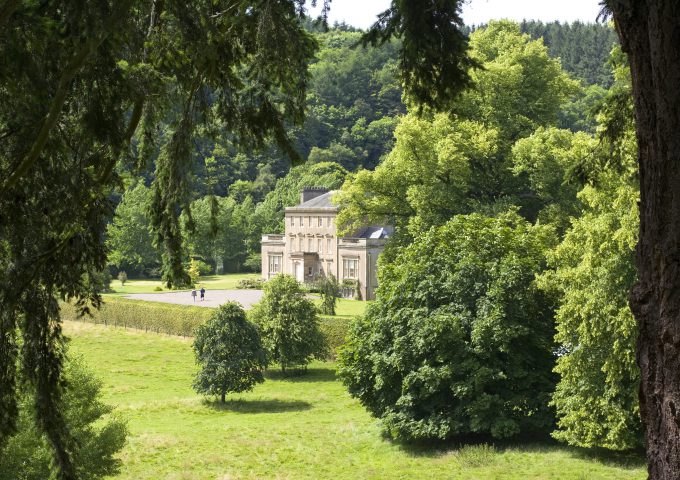
Carolside Gardens, Earlston
Carolside is an 18th century mansion in beautiful parkland, in a valley in the Scottish Borders. It’s setting is romantic and serene ; framed by steep wooded hills with the River Leader running through.
Its facade is thought to have been modelled on Chesterfield House , Mayfair , London (demolished 1937) .The design was by Isaac Ware the Palladian arcitect.(1704-1766) There has been a settlement there since at least the 16th Century and Carolside has been cultivated for over 200 years. It has a long history of good gardeners and was a well-known Rose garden in Edwardian days.
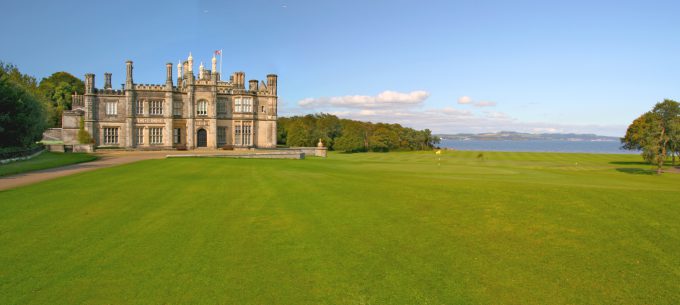
Dalmeny House, South Queensferry
Dalmeny House was completed in 1817 and sits in rolling parkland to the West of Edinburgh. With spectacular views overlooking the Firth of Forth, the house is home to The 7th Earl and Countess of Rosebery.
Although very much a family home, the house is open to the public for viewings and corporate events. The inspired architecture of the house will fascinate some. Others will be enticed by the extraordinary collection of antique furniture, artworks and curious objects.
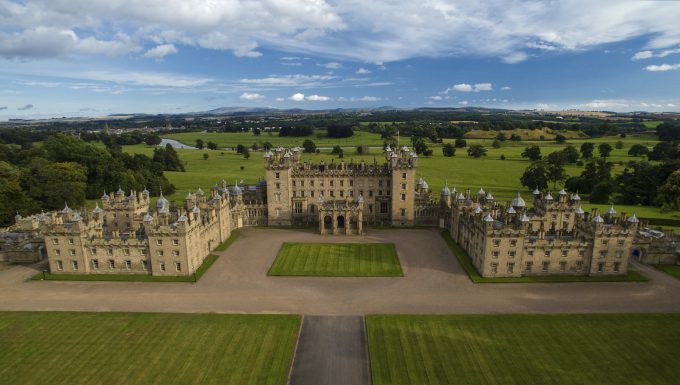
Floors Castle, Kelso
What could be better than exploring a beautiful Scottish Castle? Built by architect William Adam in 1721, Floors Castle is Scotland’s largest inhabited Castle and home to the 10th Duke of Roxburghe.
An architectural masterpiece inside and out, the Castle houses a marvellous collection of fine art and porcelain for you to enjoy, including paintings by Matisse and our famous Belgian tapestries.
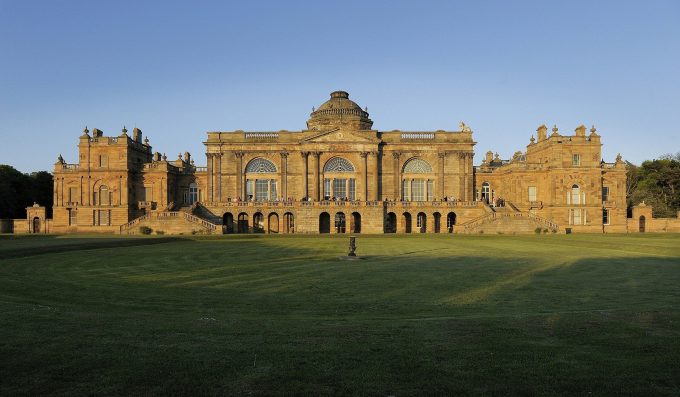
Gosford House, Longniddry
Gosford House, the seat of the Earls of Wemyss and March, is set in 5,000 acres of combined coast and parkland in East Lothian on the south side of the Firth of Forth and close to the celebrated golf courses of Muirfield, Gullane and Craigielaw.
The property is dominated by Gosford House, an imposing neo-classical mansion which was one of the last great architectural commissions of the celebrated Scots architect, Robert Adam.
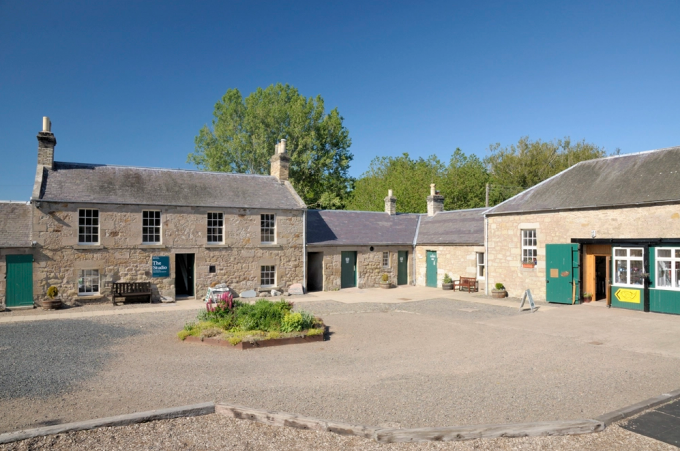
The Hirsel, Berwickshire
The Hirsel is a 500-acre park with lake and river. A spectacular rhododendron and azalea wood can be seen, along with daffodils in April.
The site is a haven for ducks and summer migrants. Also features craft shops, tea room, pottery, museum.
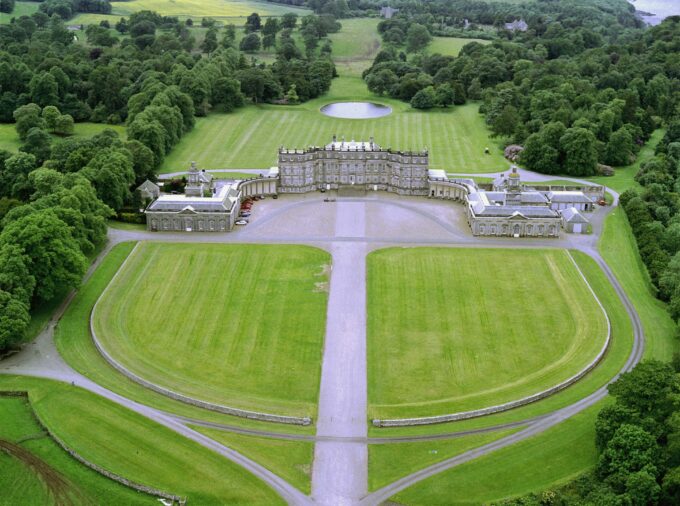
Hopetoun House, South Queensferry
Hopetoun House is a unique gem of Europe’s architectural heritage and undoubtedly ‘Scotland’s Finest Stately Home’. Situated on the shores of the Firth of Forth, it is one of the most splendid examples of the work of Scottish architects Sir William Bruce and William Adam.
The interior of the house, with opulent gilding and classical motifs, reflects the aristocratic grandeur of the early 18th century, whilst its magnificent parkland has fine views across the Forth to the hills of Fife.
..also in Lothian and the Scottish Borders
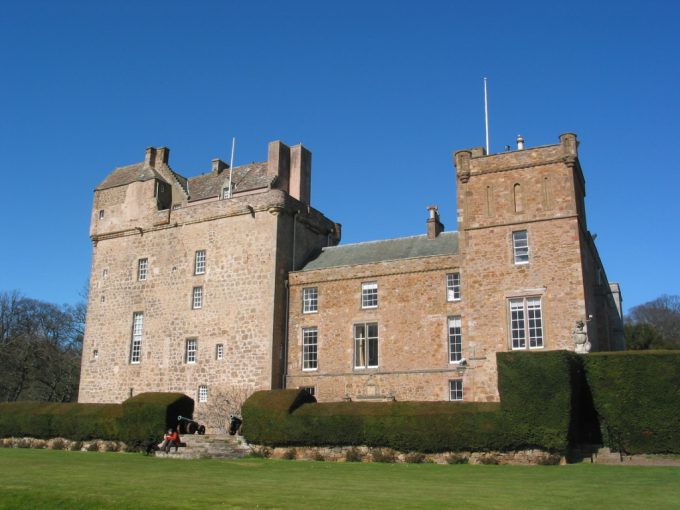
Lennoxlove, East Lothian
A strong and well-preserved keep or Pele tower with suitably rugged interiors; Lennoxlove, at its heart, was extended in the 17th-century into a more comfortable house.
This delightful castle now contains the Dukes of Hamilton collections of pictures, furniture and porcelain in addition to the death mask, famous letter casket, and other mementoes of Mary Queen of Scots.
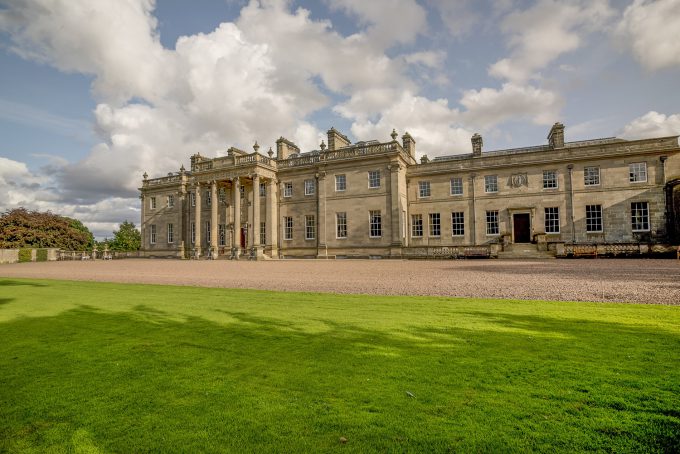
Manderston, Duns
Manderston is a stunning example of Edwardian architecture, the supreme country house in Scotland of it’s era. A house on which no expense was spared, with opulent staterooms, a silver staircase, marble hall, acres of formal gardens and magnificent stables.
John Kinross the architect designed the house for Sir James Miller a nouveau riche baronet who married into traditional aristocracy. John Kinross was instructed to create a home of glittering style to match Sir James Millers wealth and status as a country gentleman.
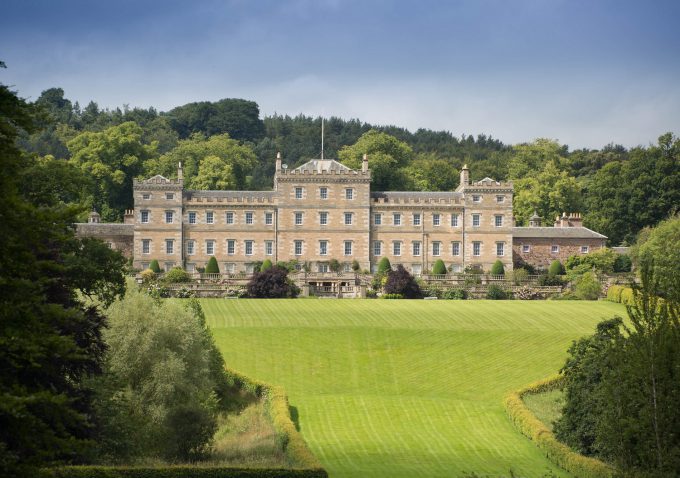
Mellerstain House & Gardens, Gordon
One of Scotland’s finest stately homes, this Robert Adam masterpiece is a ‘must-see’; complemented by the fine art, period furniture, china and embroidery collections within. It’s idyllic location does not disappoint, with acres of stunning parkland, formal gardens, lakeside walks and cafe.
Mellerstain, one of Scotland’s great Georgian houses was begun in 1725 by Scottish architect William Adam and completed in 1778 by his more famous son, Robert. The result is an outstanding example of 18th-century Scottish architecture, and some say one of Robert Adam’s finest works.
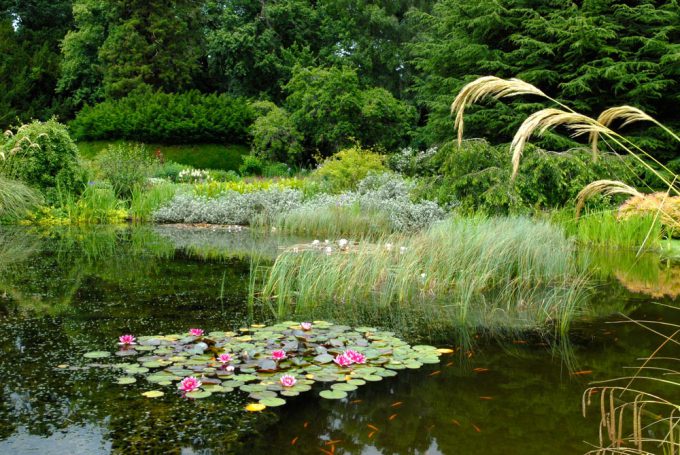
Mertoun Gardens, Melrose
Mertoun House was designed by Sir William Bruce for Sir William Scott of Harden and was built in 1703-05. It occupies an outstanding situation on a high bank overlooking the River Tweed and ornamental parkland beyond.
Little is known of the early history of the gardens, but it is assumed from the great age of many of the specimen trees that they were laid out at the time the mansion was built.
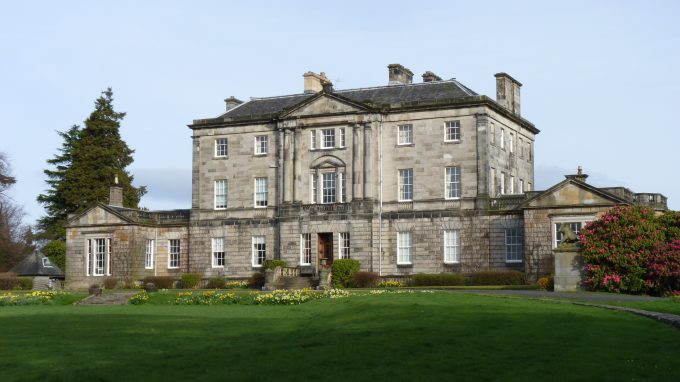
Newliston Kirkliston
Newliston is on of Robert Adam’s last and smallest country houses with an 18th-century designed landscape including rhododendrons, azaleas and water features.
An inventory of chattels not on public display can be inspected and such chattels can be viewed by request when the house is open to the public.
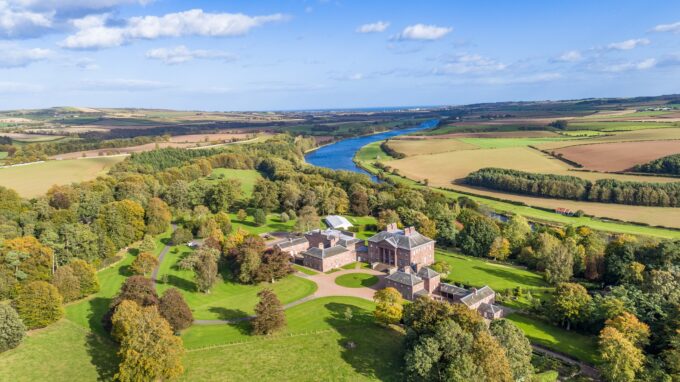
Paxton House, Berwick-on-Tweed
Originally built for Patrick Home, a young Scottish laird, Paxton House is one of the finest 18th-century Palladian country houses in Britain featuring Adam interiors.
It has recently gained recognition for its nationally important collection of Chippendale and Trotter furniture by Museums Galleries Scotland on behalf of The Scottish Government.
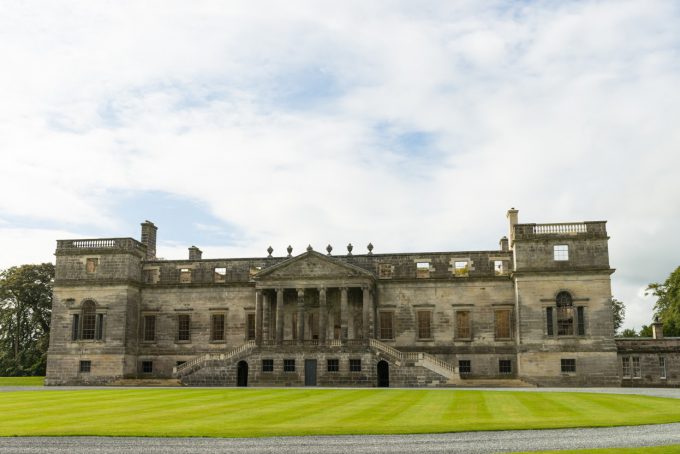
Penicuik House, Midlothian
Penicuik House is the finest and most influential example of Palladian architecture in Scotland. Built in the 1760s and devastated by fire in 1899, the once magnificent buildings has stood as a ruin for over 100 years.
It sits at the centre of an important 18th-century designed landscape, which together form an exceptional physical record of the artistic patronage of the Clerk Family.
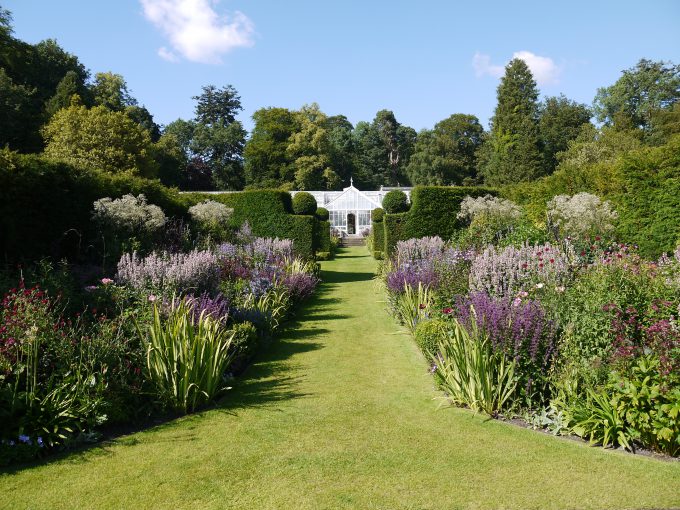
Portmore House Peebles
Set at 800’ in the wonderful Peebleshire countryside, the old Victorian gardens at Portmore have been recreated by the current owners Mr and Mrs David Reid over the past 30 years.
The 1½ acre Walled Garden, which is at its height between mid-July to August, has herbaceous double borders, a potager, rose garden, pleached lime walk and ornamental fruit cages.
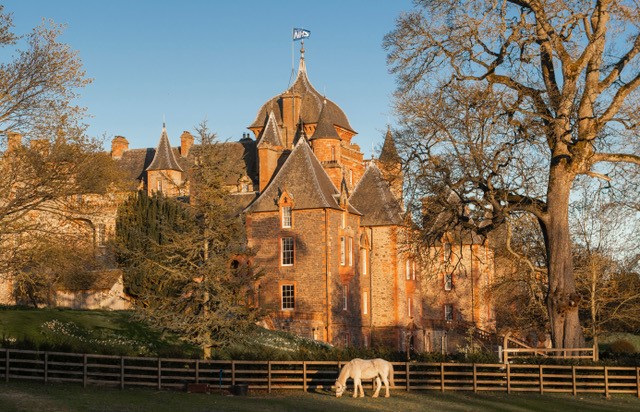
Thirlestane Castle, Lauder
Nestled in an idyllic part of the Scottish Borders, Thirlestane Castle is a magnificent 16th century castle set in a meadow landscape. Family seat of the Duke of Lauderdale, it is one of the oldest and finest castles in Scotland and still remains home to the Maitland family today.
Come and see the breathtaking 17th-century Dunsterfield plasterwork ceilings, one of the largest collections of family portraits in Scotland and nurseries full of historic toys.
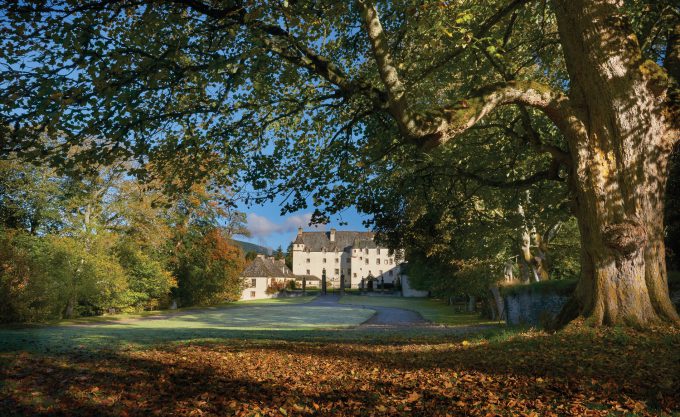
Traquair House, Innerleithen
Traquair is Scotland’s Oldest Inhabited House. Visited by 27 Scottish Kings and Queens Traquair dates back to 1107 and has been lived in by the Stuart family since 1491.
Originally a royal hunting lodge, Traquair played host to Mary Queen of Scots and later as staunch Catholics they supported the Jacobite cause without counting the cost. Today, we welcome visitors from all over the world. Enjoy the extraordinary history of this lived in family home.
Become a Historic Houses member
Explore the nation’s heritage from just £68 per year.
Hundreds of the most beautiful historic houses, castles, and gardens across Britain offer our members free entry.
Also: receive a quarterly magazine, enjoy monthly online lectures, get exclusive invitations to buy tickets for behind-the-scenes tours, and take up a range of special offers on holidays, books, and other products you might like.
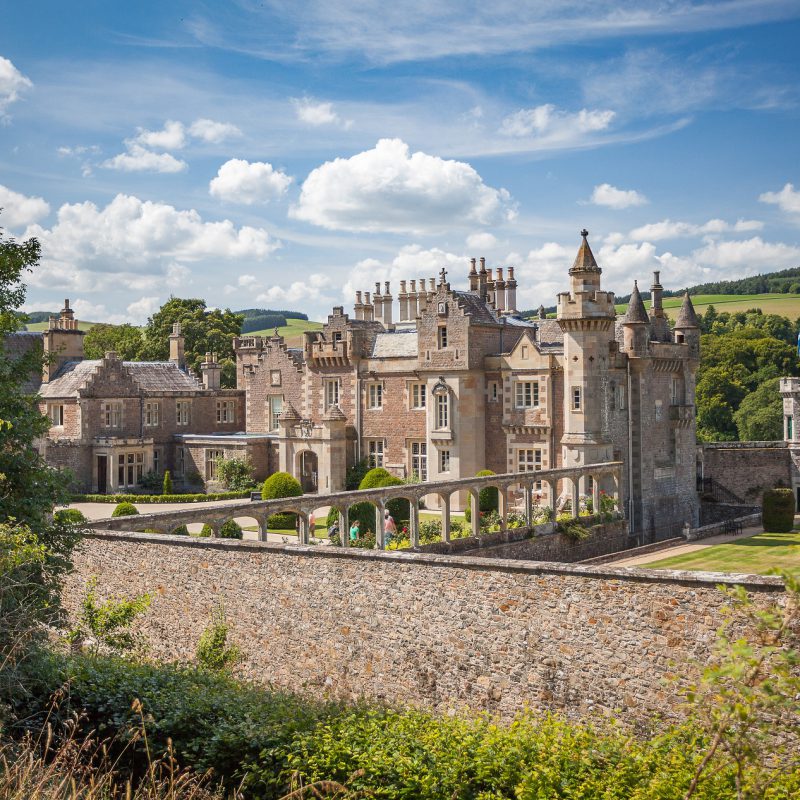
Explore other UK regions
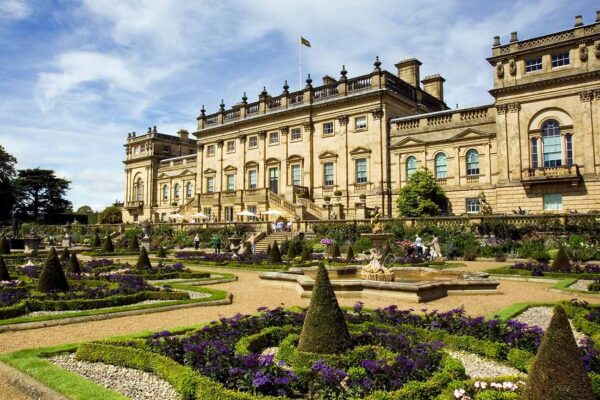
The 20 Best Places to Visit in Yorkshire
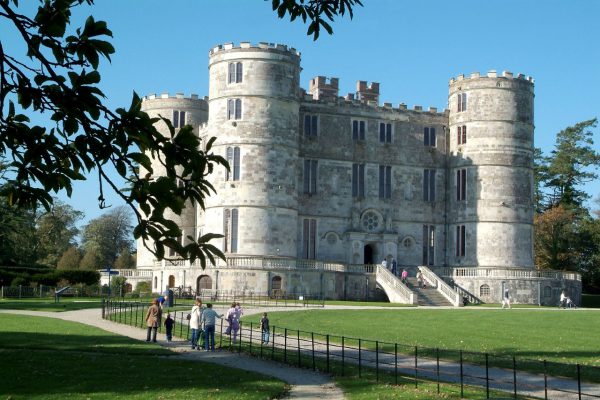
The 53 Best Places to Visit in the South West of England
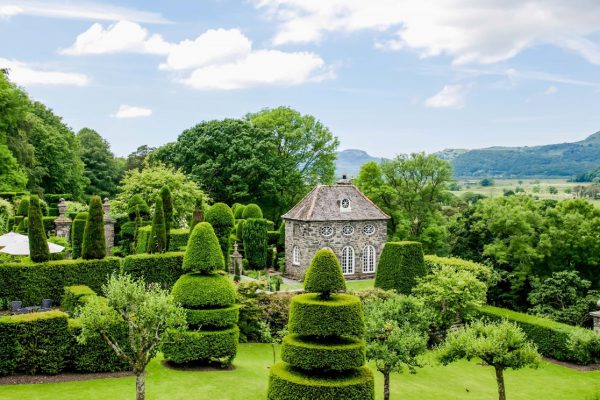
Best Places to Visit in Wales
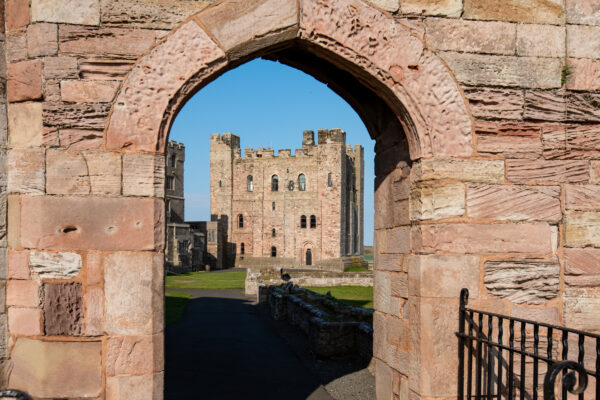
The 10 Best Places to Visit in the North East of England
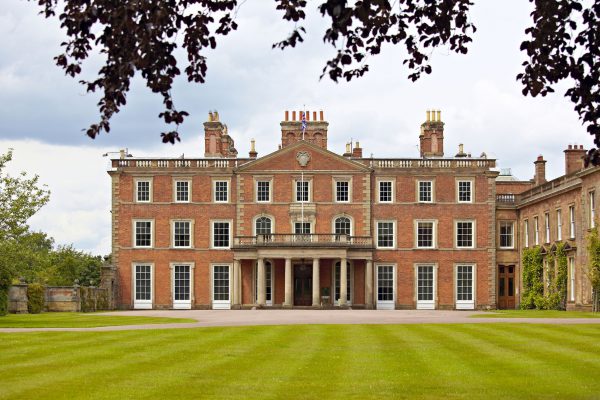
The 14 Best Places to Visit in the West Midlands
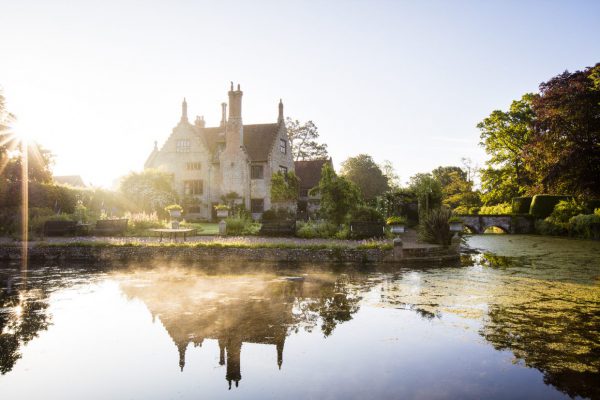
The 21 Best Places to Visit in the East of England
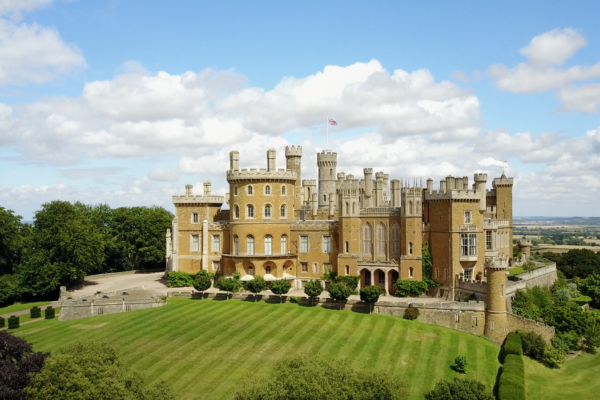
The 24 Best Places to Visit in the East Midlands
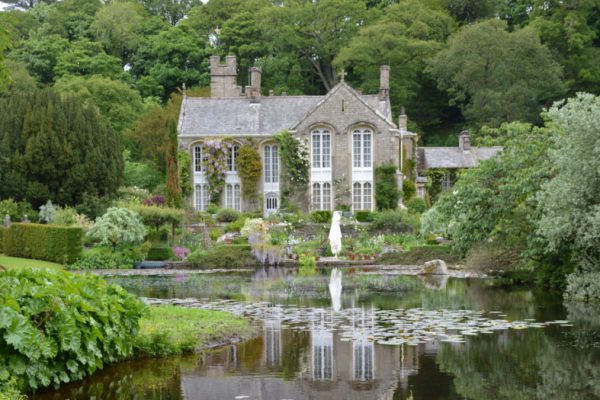
The 28 Best Places to Visit in the North West of England
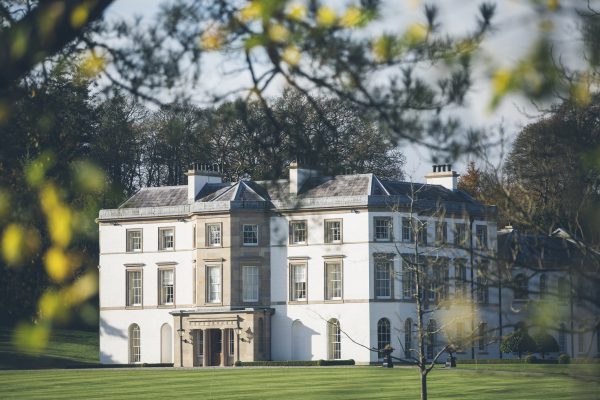
The 4 Best Places to Visit in Northern Ireland
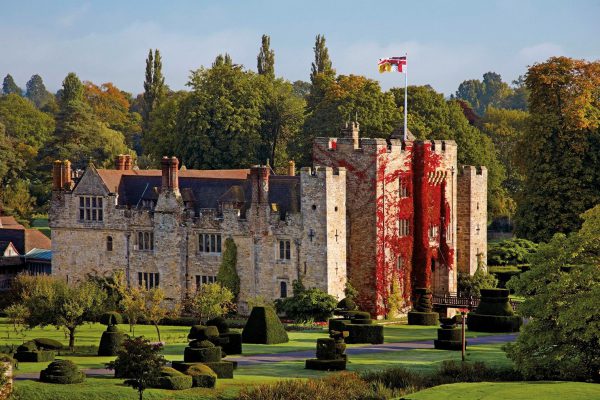
The 56 Best Places to Visit in London and the South East
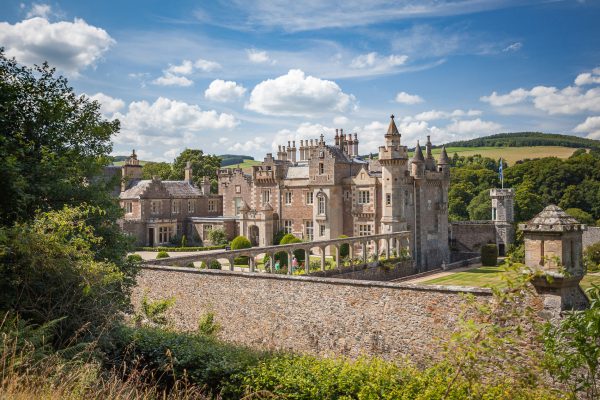
Visit the 300 Best Historic Houses & Gardens in the UK
Sign up for our newsletter.
Read more of our stories, receive exclusive content, and find out what’s on.
You can unsubscribe at any time by clicking the link in the footer of our emails. For information about our privacy practices, please visit our privacy policy .
" * " indicates required fields
Member Login
Forgotten your password?
Register to login
All members (except house and corporate members) need to register for an online account to be able to log in to the site. If you are a house or corporate member, contact our offices.
If you have already registered an account and still can’t login, try setting a new password by clicking ‘Forgotten your password’.
Not yet a member?
In order to view our online lectures and other members-only content, and access hundreds of Historic Houses for free, you’ll first need to become a member.
Choose a region
- View all sites
- Central & West
- Dumfries & Galloway
- Edinburgh & Lothians
- Glasgow, Clyde & Ayrshire
- Kingdom of Fife
- North & Grampian
- Orkney Isles
- Perthshire, Kinross & Angus
- Scottish Borders
- Shetland Isles
- Western Isles

IMAGES
VIDEO
COMMENTS
Explore famous and historic attractions in Scotland. Including landmarks, monuments, castles, palaces, standing stones, historic wonders and more.
From Orkney and Shetland to the rain-lashed glens of the central Highlands, here’s our pick of the best places to commune with Scottish history – and feel a little of that history seep back into the modern-day. You might even walk in the footsteps of your own Scottish ancestors.
Discover our 12 must-visit historic towns to visit in Scotland. Including Dunkeld, Arbroath, Pittenweem, Fort Augustus, Wigtown, Inveraray and more.
In contrast, regal gems such as Edinburgh Castle and Holyroodhouse Palace stand as prominent landmarks that have hosted some of the most famous figures in Scottish history, and are now popular tourist spots. Here’s our selection of 10 of the best historic sites that Edinburgh has to offer.
From Skaill House in the Orkneys to Floors Castle on the Scottish Borders, it’s worth taking account of where you can visit when making a day trip to Scotland or a longer excursion. Here, we list the best places to visit in Scotland, with links to each house and garden in their specific region.
Start exploring our historic properties across Scotland by searching by region. Use the interactive map to select a location and browse the exciting range of stunning locations.